Alma Mater of technical progress
Hi, Geektimes! Honestly, it’s not every day that you can start with a welcome blog post from one of the coolest technical universities in Russia. Feelings like before a session - I can confuse the decimal logarithm with a natural one from excitement, and the day before the exam I tried to read the lectures of the semester, at least briefly, the immense history of this very university, and it must be admitted that it is really immense. But there is no turning back - MSTU. N.E. Bauman opens his blog at Geek Times, and I, as one of the guests, will spend a nano-tour.
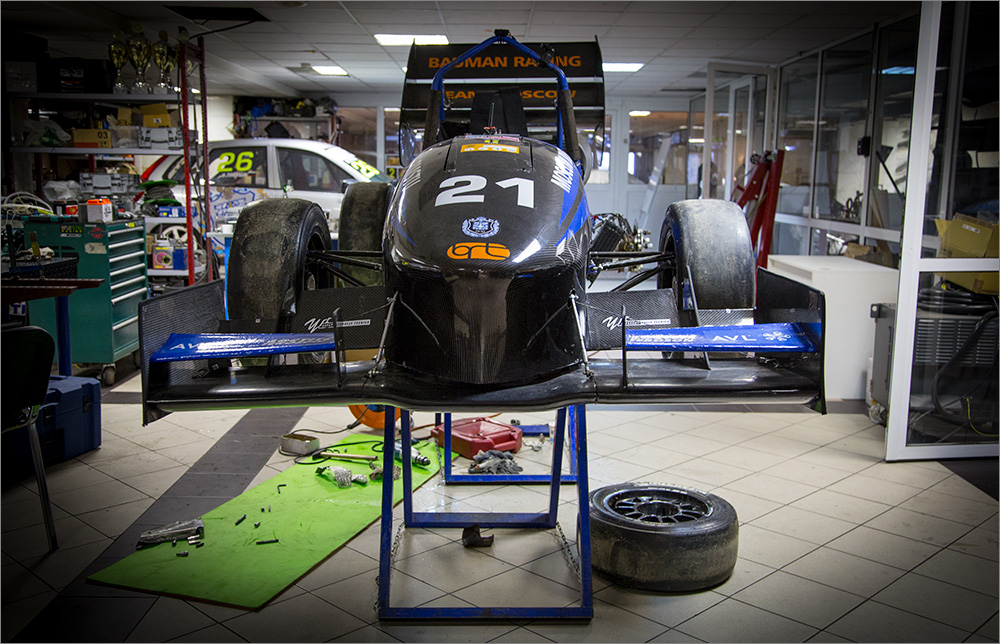
Under the cut a lot of pictures. Anyone who reads and finds all the Easter eggs - automatic test.
In general, I am more used to writing about the offices of IT companies than about universities, but as they say, why not. Moreover, it is the University. N.E. Bauman, like no other, is similar to the offices of IT companies and even surpasses them precisely in the spirit and concentration of the best students of technical specialties in Russia. Just imagine: you walk along the corridor, and there is a group of students nearby - and among them are future employees of the largest IT companies, search engines, engineers and inventors. That is, those who will certainly determine what it will become, our nearest technological future.
')
Meanwhile, Baumanka has a great and glorious past. I'll start with a little historical excursion. Everything happened back in 1826, when Empress Maria Feodorovna (wife of Paul I) ordered the establishment of large workshops of various crafts for orphan boys from the Educational House. Under this case, the famous architect DI Gilardi was rebuilt by the Slobodskoy Palace, which had already burned down in 1812. And on July 13, 1830, Emperor Nicholas I approved the “Provision on a Handicraft Educational Institution” - from this date the chronology of the current MSTU began.
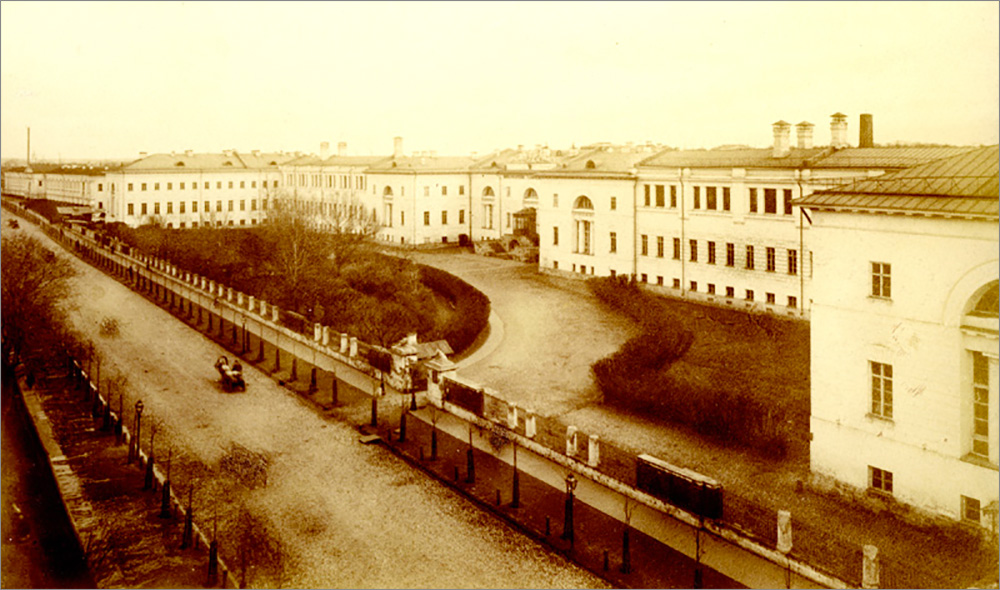
In this form, the palace appeared before the first disciples. Photo from here .
In 1868, the Charter was issued, the first paragraph of which read: "The Imperial Moscow Technical School is a higher specialized educational institution, which has the main purpose to form construction engineers, mechanical engineers and process engineers." The first departments in the steel school were the departments of higher mathematics, general and applied physics, construction of machines, construction art, technology of fibrous substances, general chemistry, chemical technology. From there, and led the tradition to produce the coolest engineers of the country, inventors and professionals with a capital letter.
Since then, the school has been repeatedly renamed, and all sorts of "branches" later became quite self-independent universities. For example, this is how the “Baumanki family tree” looks like, which is located in the main academic building:
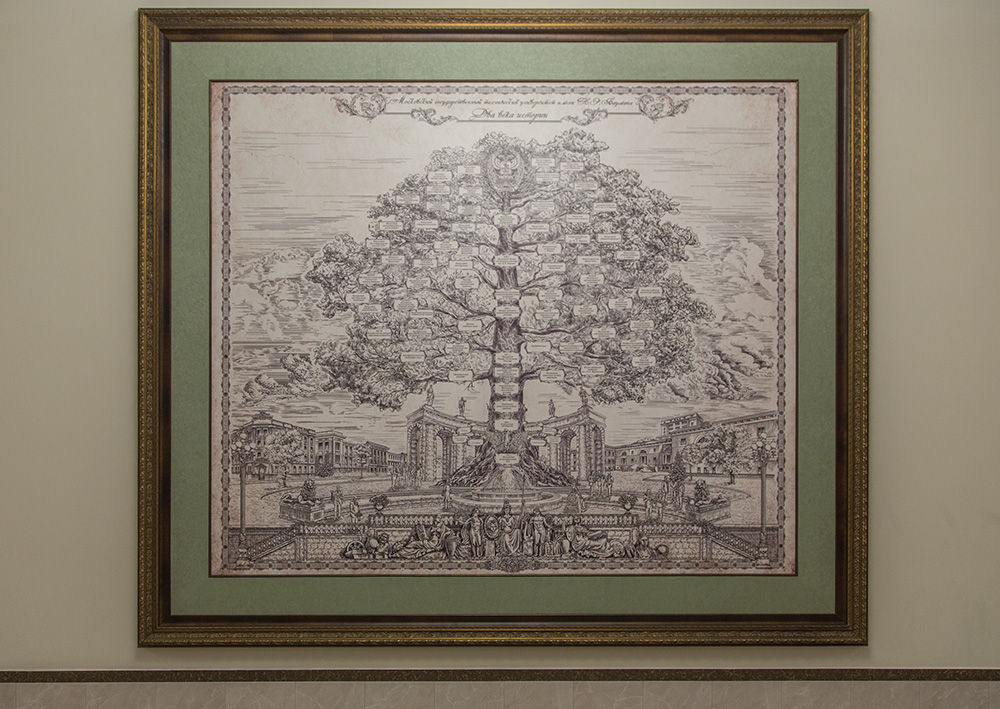
[ Clickable ] It was not easy, but I found the source of this picture - look, interesting.
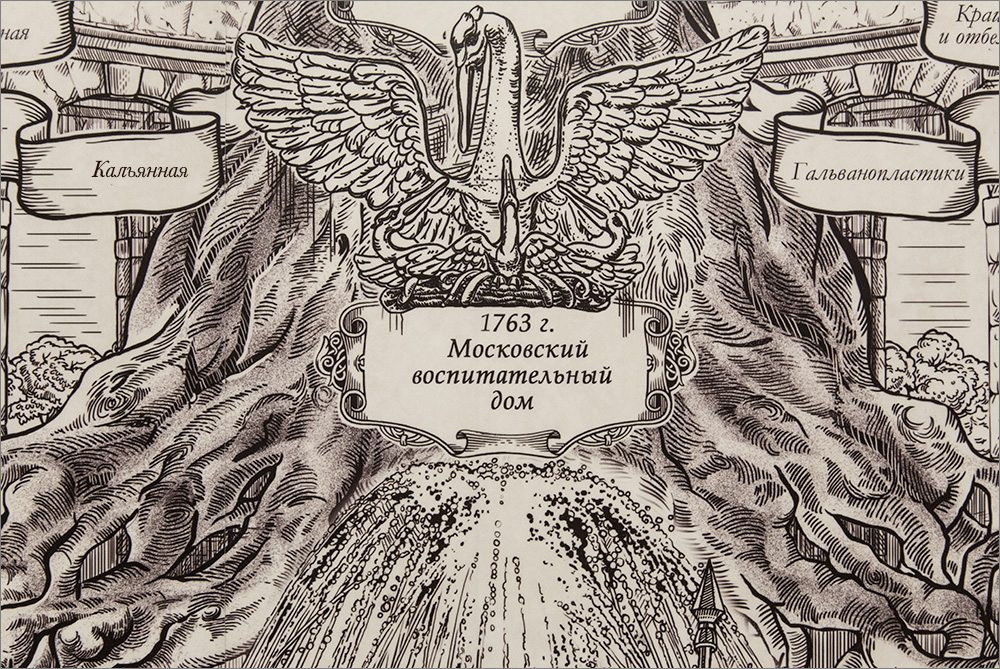
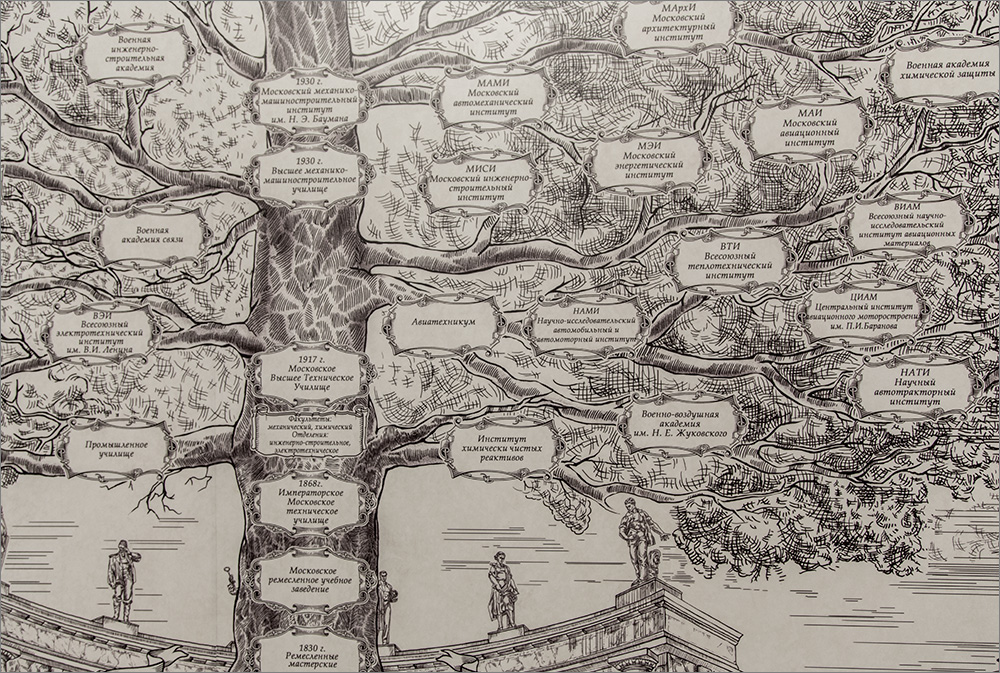
I was surprised to learn that my institute (MEI TU) is just one of many “processes”.
From 1918 to 1930 and from 1943 to 1989 the institution was called MSTU (Moscow Higher Technical School, the older generation still calls it MGTU), although the alternative interpretation of this abbreviation sounds like "Courage, Will, Work and Perseverance" - now this phrase is the motto University).
In Moscow there are several MSTU buildings - these are educational and laboratory-laboratory buildings, although some branch faculties are located in different cities near Moscow at various enterprises (Almaz-Antey, RKK Energia, etc.). The university also has three branches - Kaluga (on 7 buildings, 5 faculties), Dmitrovsky (not far from the Radio Telescope named after NE Bauman) and Mytishchi (on 2 faculties; the former Lestech).
More than 70 specialties are taught at the University, the teaching staff is more than 4,500 professors and teachers (450 of whom are doctors of science, about 3,000 are candidates). About 20,000 students study at the university every year!
My acquaintance with the "Baumanka" began with the main academic building (aka GUK), which consists of two parts:
- the oldest (also called the palace) - is a Slobodskoy palace of the XVIII — XIX centuries, this part is facing to the 2nd Baumanskaya street;
- the second later (the so-called "circular" or "high-rise") part of the GUK consists of 12 floors and was built in Soviet times, facing the Yauza embankment - it is from this angle that the Bauman is most recognizable.

Construction began from the left wing, which is called the “north”, later the construction of the right wing was completed, as it is not difficult to guess, the “south” (audiences located in this wing are numbered with the suffix “u”). The MGTU museum is located in the same building, and on the upper floor there is a shooting range of 25 (for pistol shooting) and 50 meters (for rifles). Everyone who drove along the embankment and saw the building of the University, always noticed 6 statues above the main entrance - representatives of the specialty. Their Bauman traditions also did not pass by and gave a very specific name “six non-drinkers”.
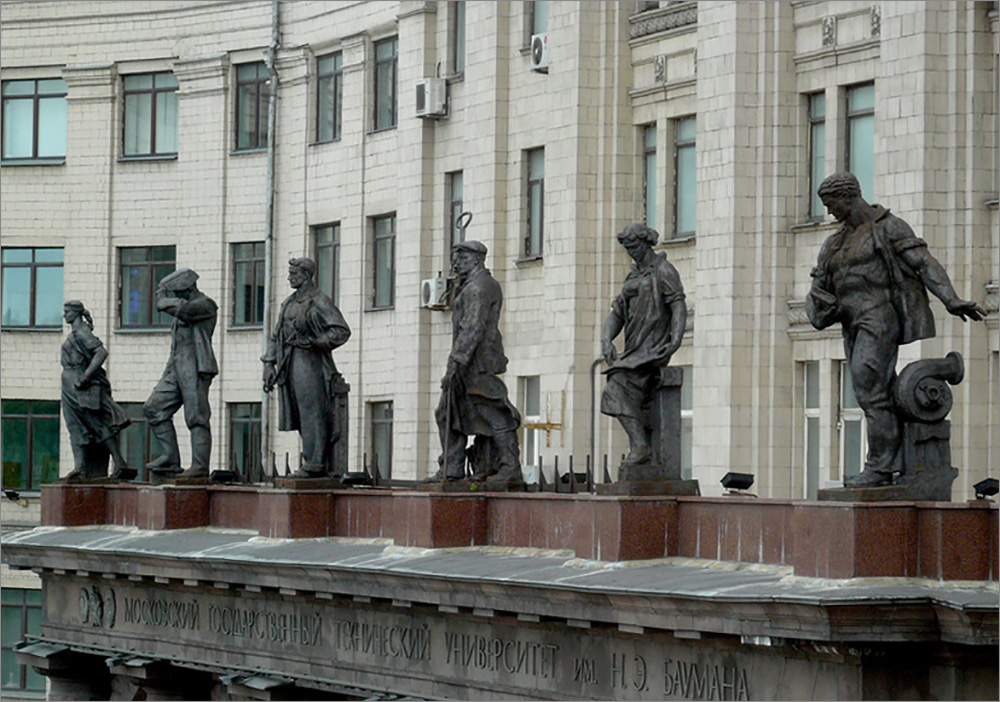
Well, or “The Seven Non-Drinkers” - implying, under the seventh non-drinker, is the Korolev monument, then the rector of the university, whose windows overlook here :) Photos from here .
Although the general rule of numbering of audiences is valid in the GUK, it is one of the most complicated among the university buildings. The audience number GUK consists of the number of the floor (the first figure) and the sequence number of the audience. Serial numbers are assigned to the audience in a staggered manner. Even numbers are located to the right when moving along the circulating part in the direction from the central staircase of a high-rise building GUK.
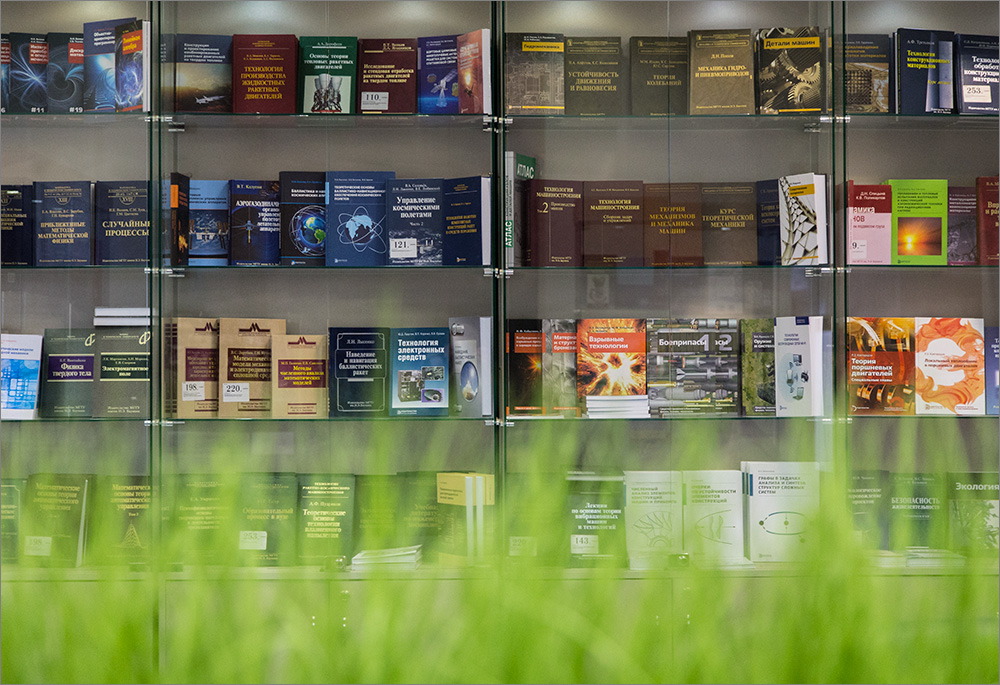
In the main educational building of MSTU there is a technology park of the Mail.Ru Group, the founder of which, Dmitry Grishin, is also a Bauman graduate.
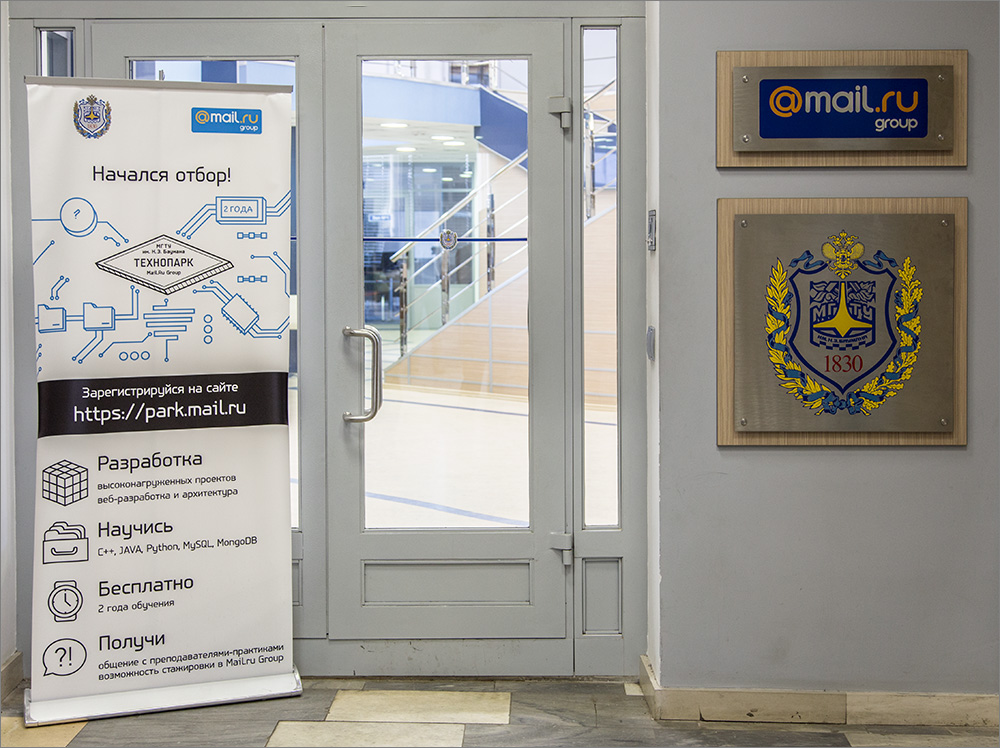
The technopark of qualified web developers and system architects is trained by practicing teachers from Mail.ru. During training, students master 23 disciplines with a practical bias. Training takes place after class, students solve complex practical problems in groups, acquire design and collaboration skills, and gain experience. And yes, it's all free.
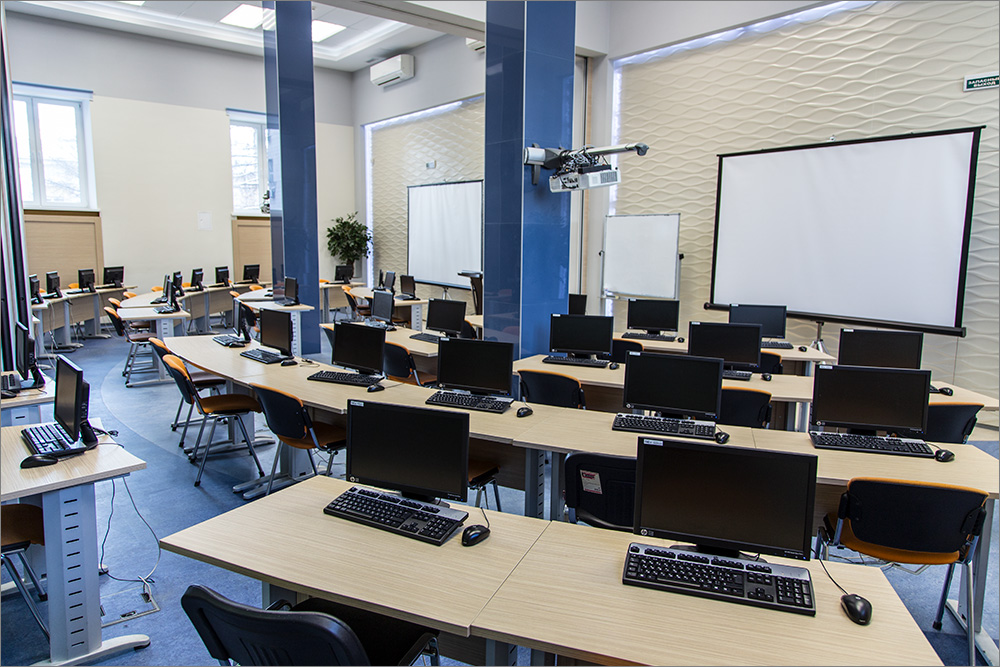
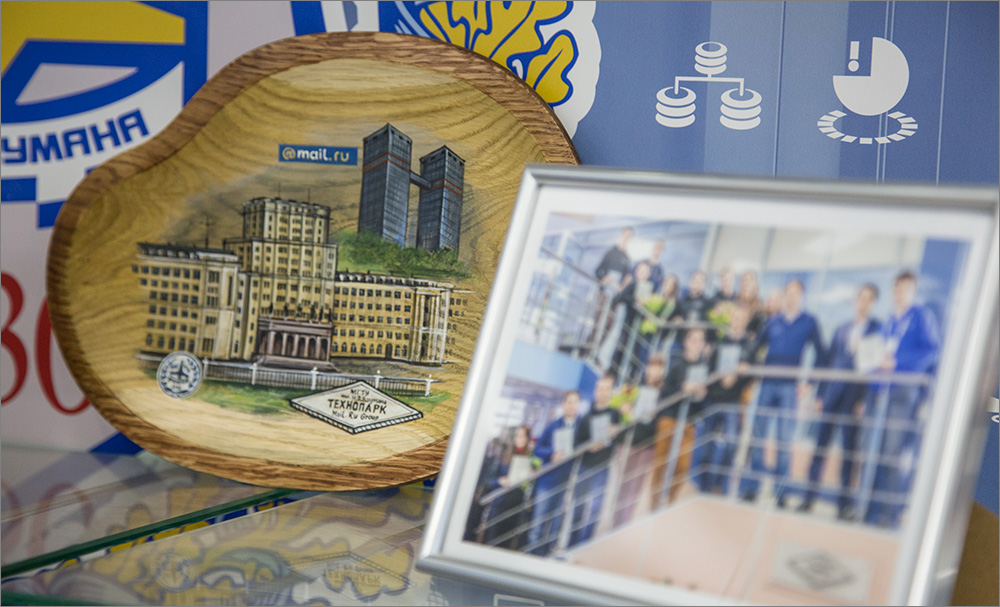
There is also a small library with modern technical and near-technical literature and a small rack with antique pieces of iron.
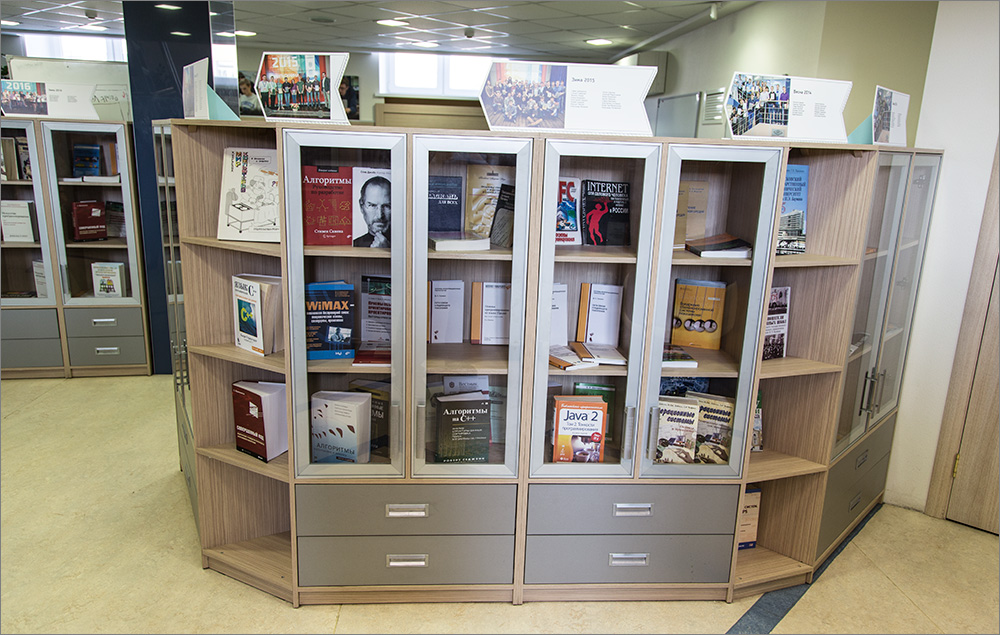
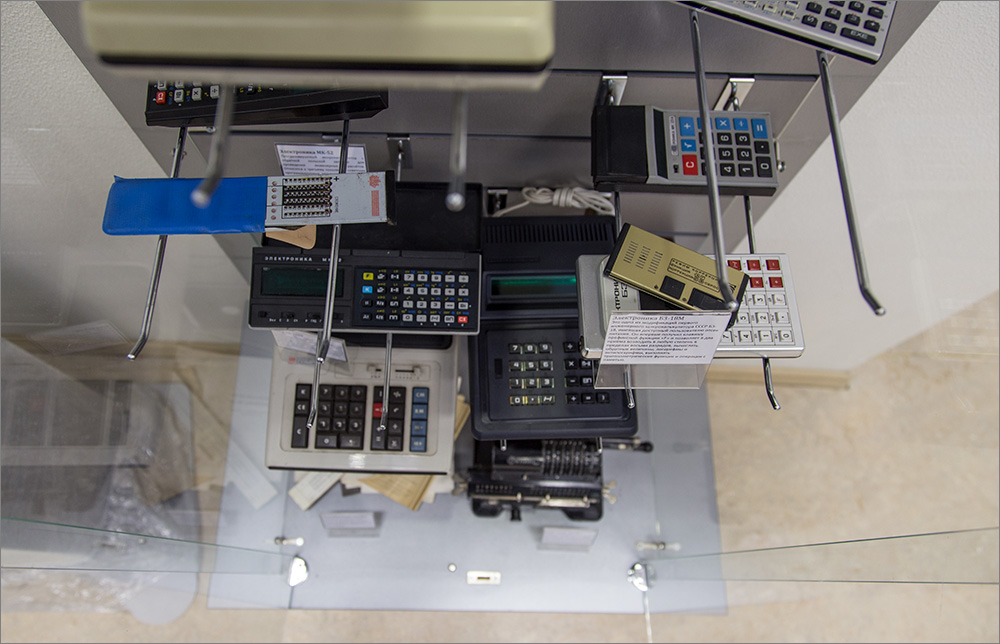
Now I am doing repairs at home, so I smelled fresh plaster by smell — some floors (and the main staircase) of the building just after repair, and, by the standards of educational institutions, everything looks very expensive. Here, for example, "Hall of Fame", in which portraits of the founders of scientific schools hang:

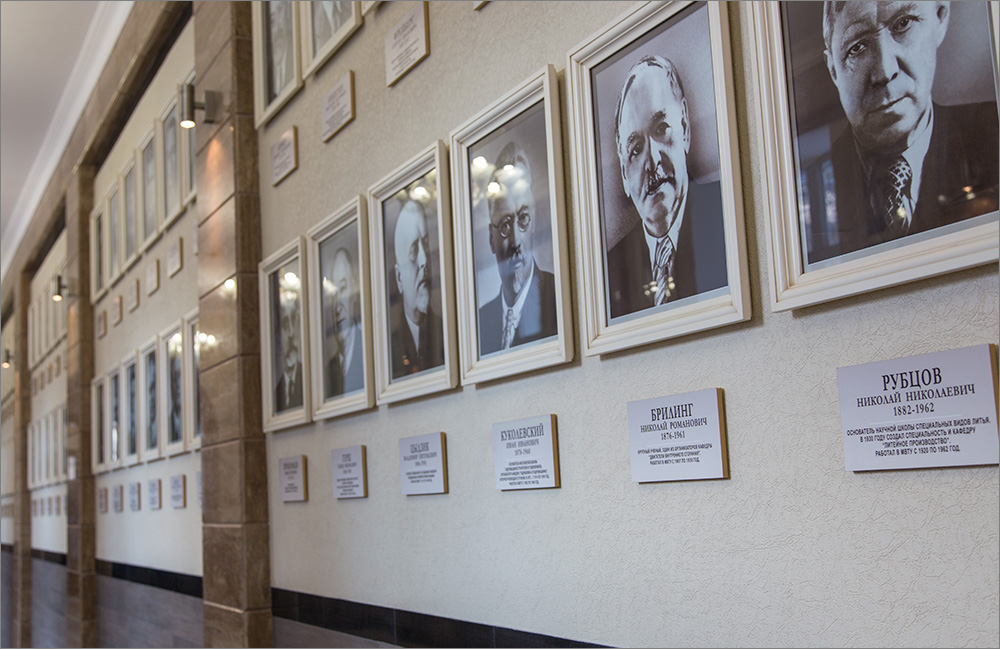
There are many well-known scientists to memorize everyone at once. NOT. Zhukovsky, N.I. Mertsalov, S.A. Chaplygin, S.I. Vavilov. P.A. Velikhov and many others.
And here is a separate gallery for outstanding students: S.P. Korolev, A.N. Tupolev, B.S. Stechkin, V.G. Shukhov, P.O. Dry, N.A. Dollezhal and other talented engineers, designers and pioneers of aviation.
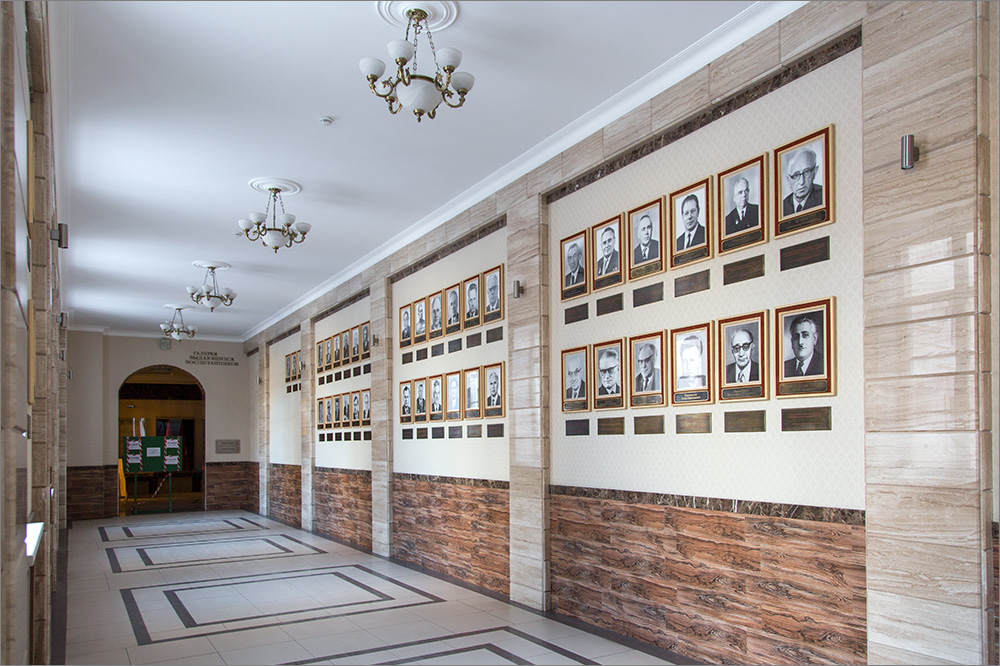
Near the hall of fame hang several awards of the university itself, which can boast not only everything: the Order of Lenin, the Order of the Red Banner of Labor and the Order of the October Revolution.

By the way, “Baumanka” is one of the few universities in which higher technical education can be obtained (as early as 1934) by people with hearing impairment - for them there are special laboratories, teachers and specially designed educational programs.
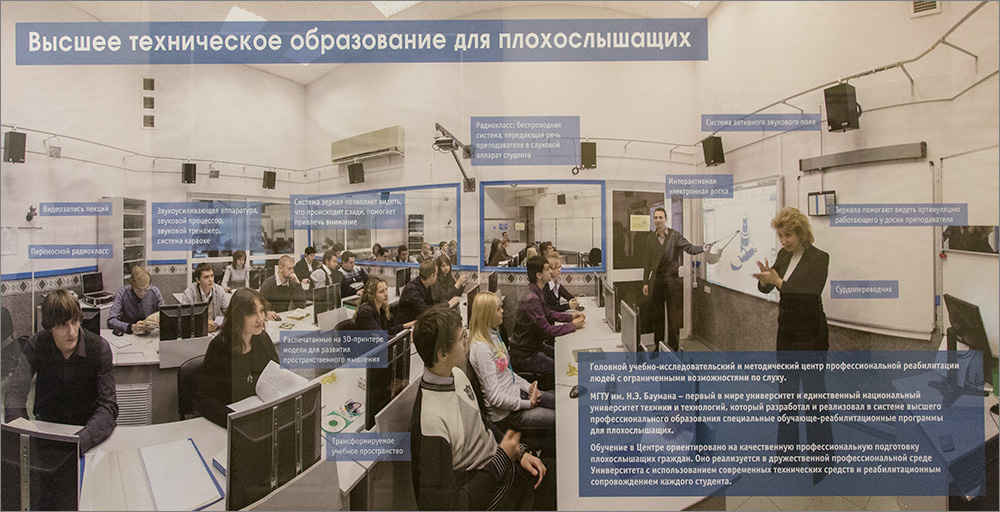
Baumans have a lot of traditions, and around the main building there are many interesting places with an unusual name. It has its own “metro” and “saccodrome” and even its own “Red Square” - one of the places in the main building (with red walls), where students often arrange a meeting.
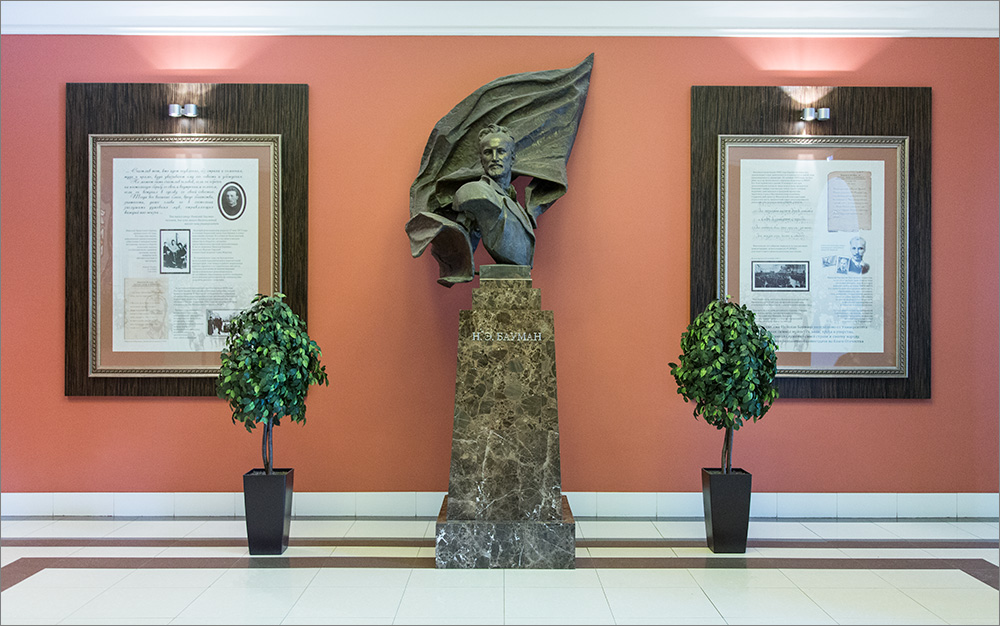
Next to the “red square” there is a “fatty row”, which consists of 4 canteens, dumplings, pancakes, a cafeteria and a couple of buffets. Um, did you just want dumplings too? )
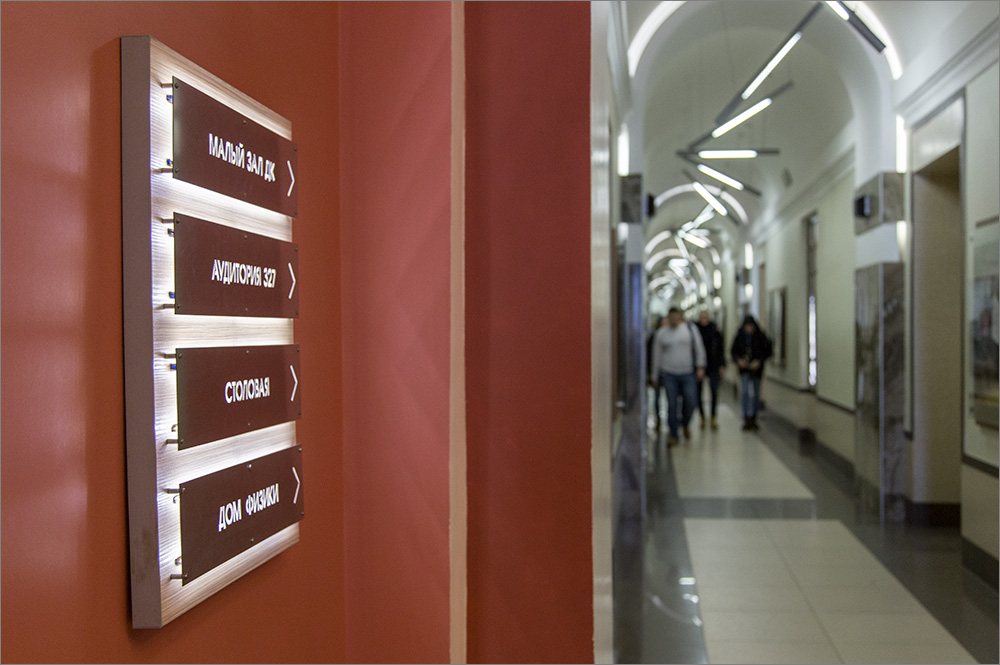
There are places in the main building that even an undergraduate can find not the first time: audience 501 and 502, 316, 323 and 327 (a separate pointer hangs for it).
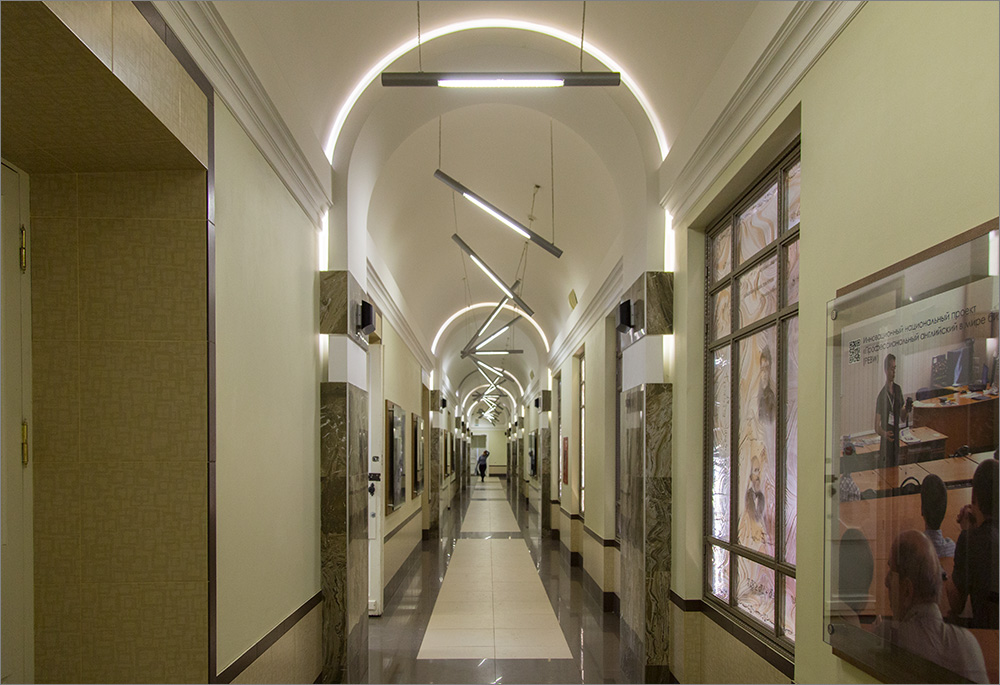
Nightmare perfectionist)
And here is what one of the places where studentscopy from each other doing laboratory work in physics looks like. In addition to the main room (in the central part of which the Foucault pendulum hangs), there are separate rooms, depending on the faculties. In total at university, believe it or not - almost 300 laboratories!
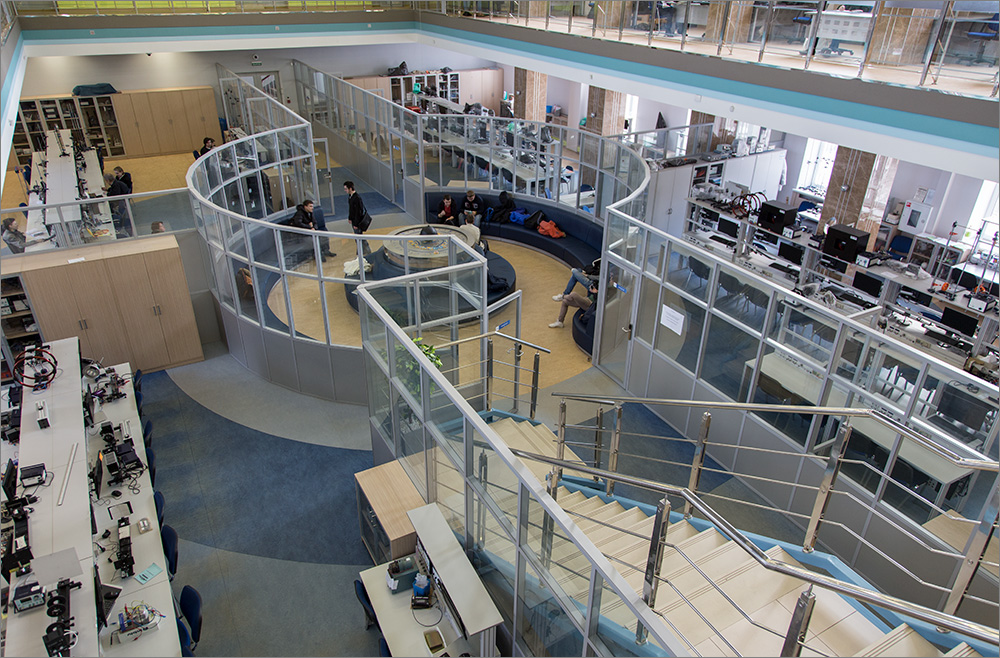
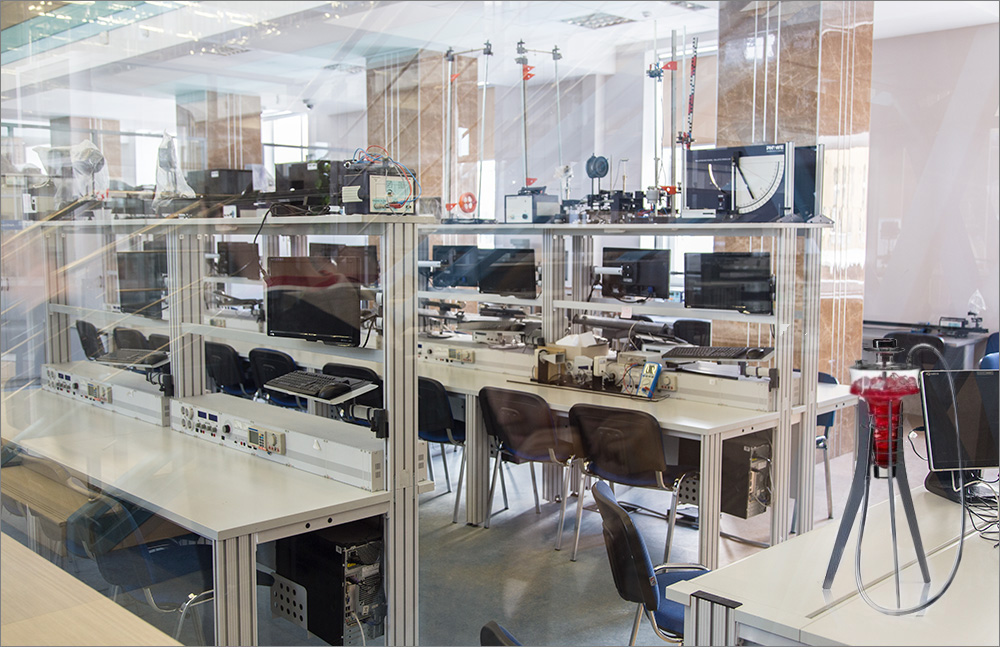
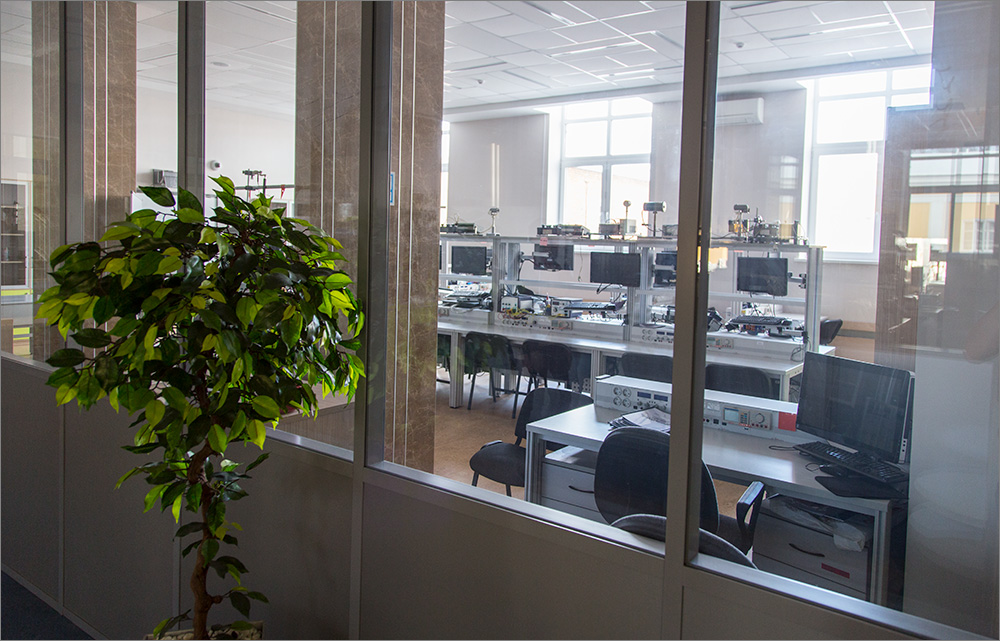
All laboratories are equipped with the necessary modern equipment and measuring equipment - this gives you the opportunity to get practical skills from the first year of study and learn how to interact with equipment and instruments, and not adjust the results (admit, did you do this at school or high school?)).
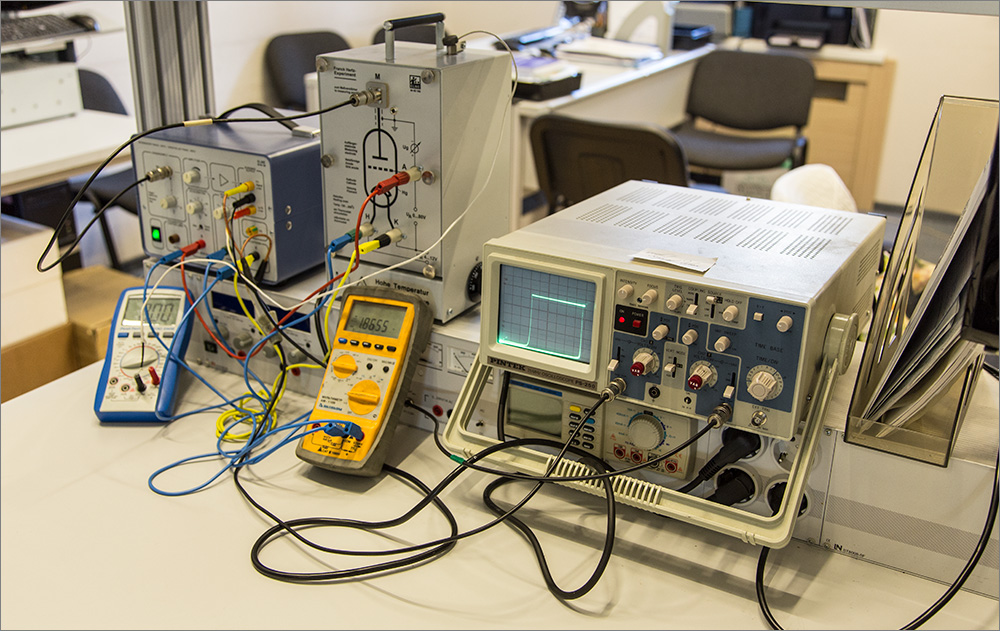
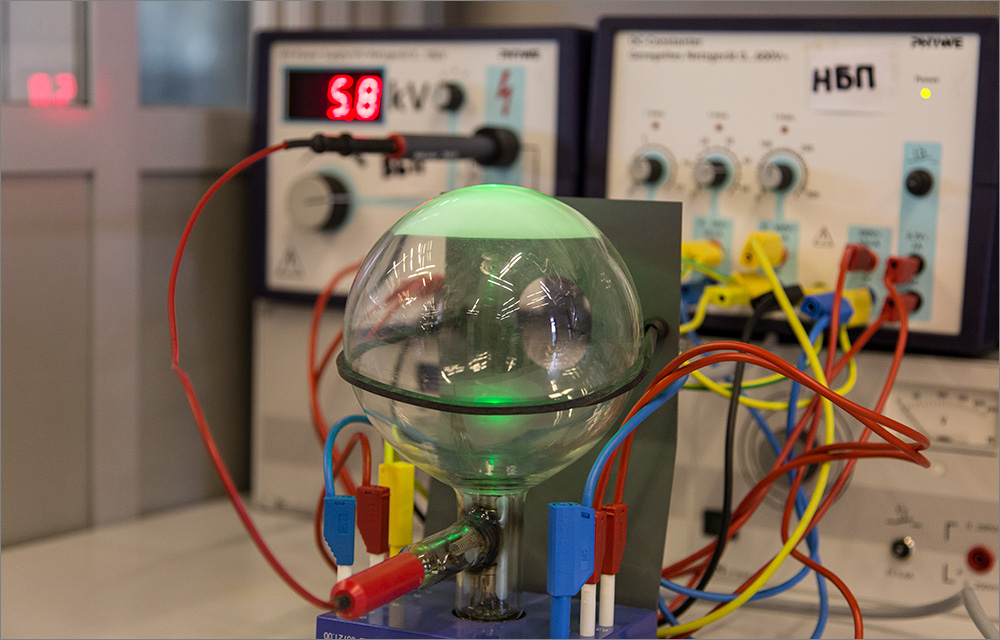
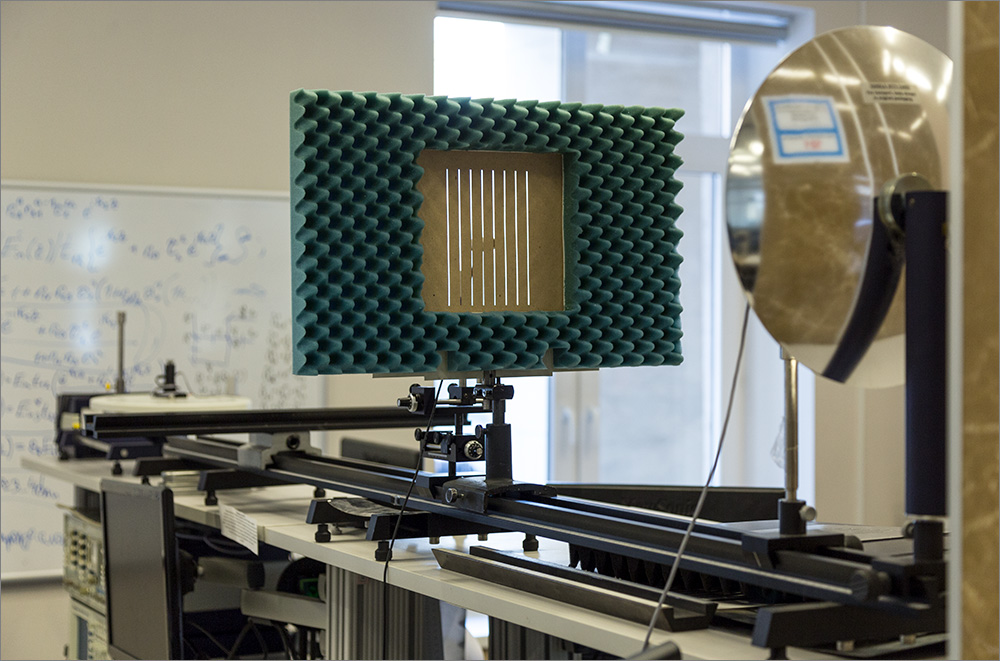
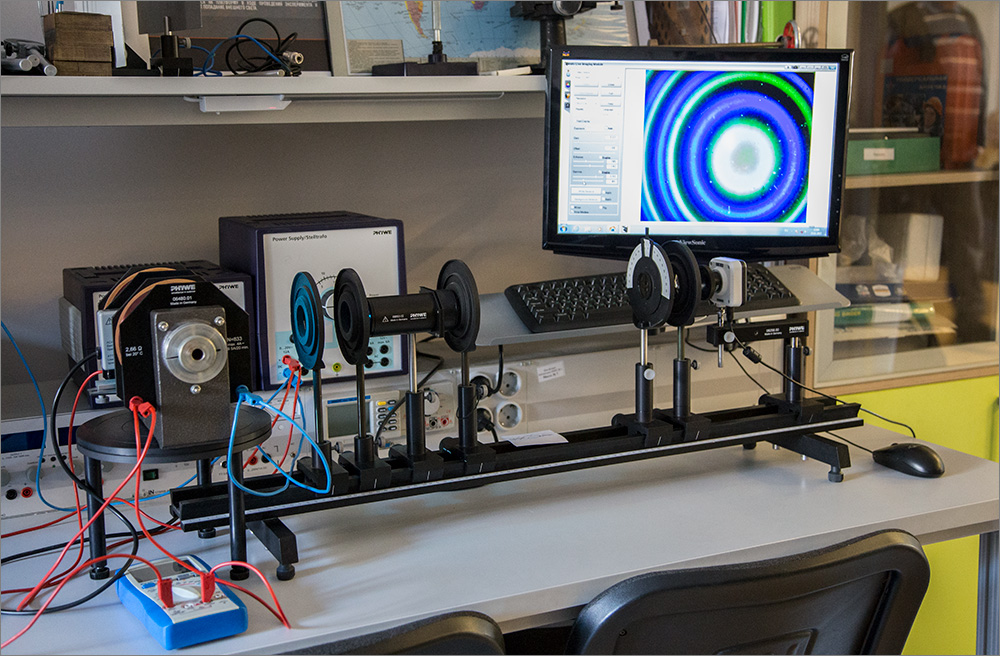
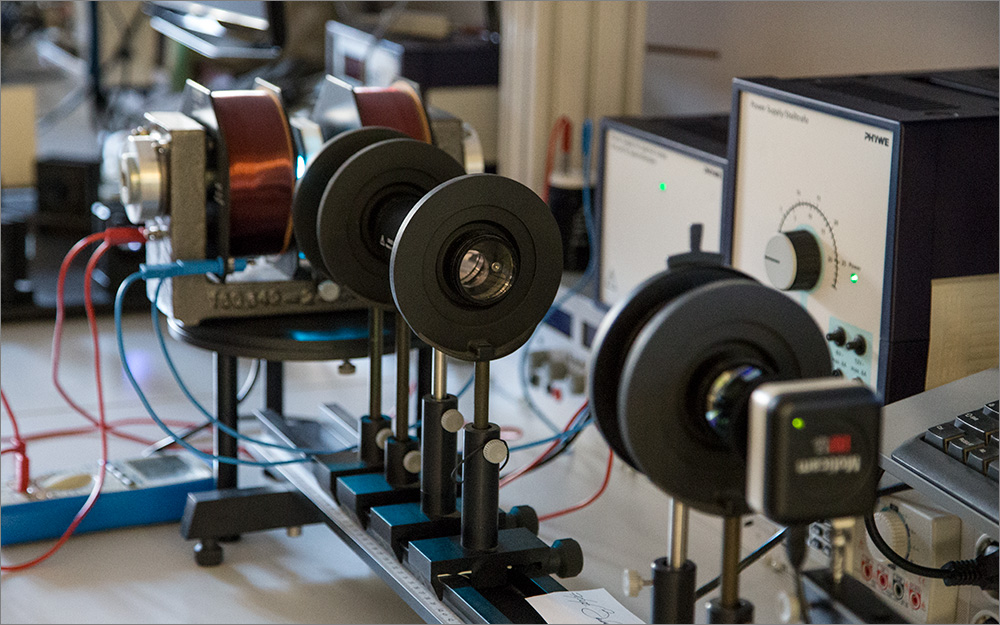

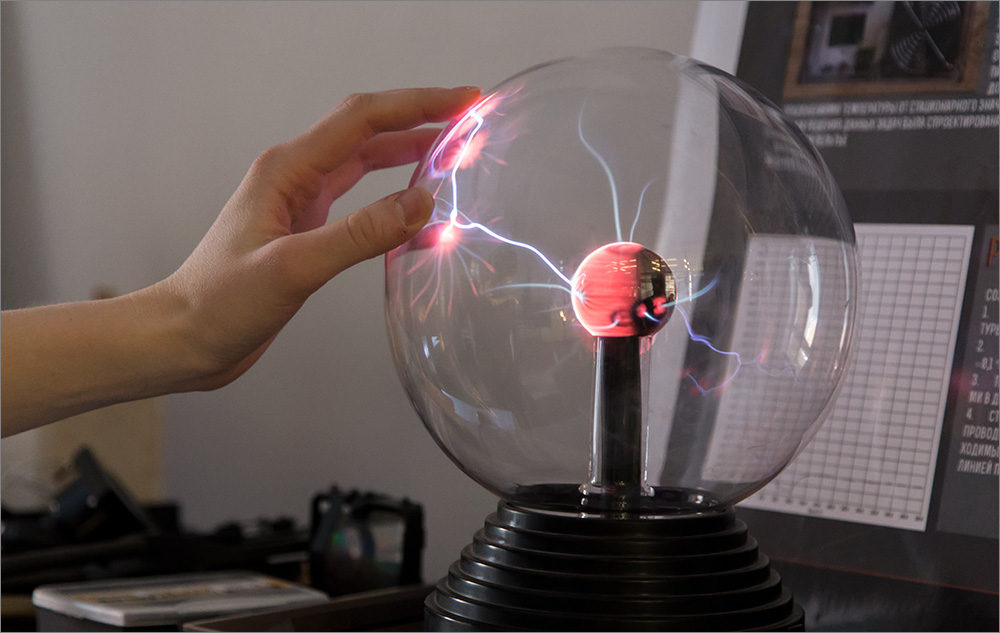
Most of the lecture halls at the University are lectures; they hold a whole stream of them — about six groups of 25 people each. The main difference between such lecturers are boards. They are three-storeyed and move using a special mechanism.
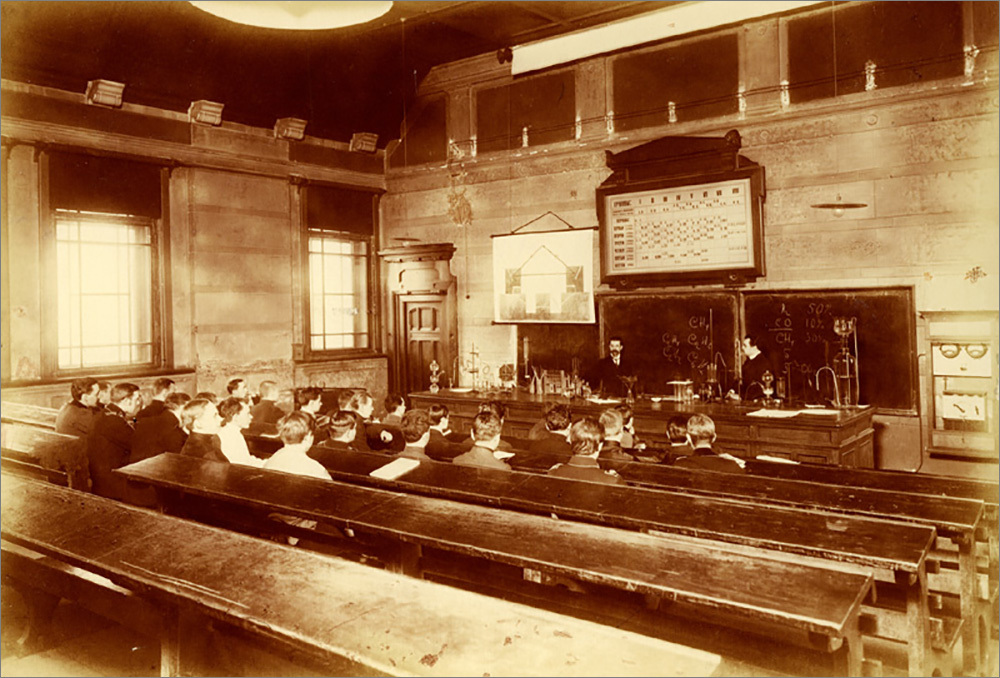
In the main building there are the two oldest audiences with a unique ceiling, where the famous Shukhov, Korolev and Tupolev still studied. It is these audiences who usually fall under the sights of all filming taking place in MSTU (“My Boyfriend is an Angel”, “Since March 8, Men”, “House of the Sun”, “Avatar” and others).
In one of the research and educational centers (there are only about fifteen of them at MSTU) a rather interesting exposition met - an option of how the area in which the university is located could look in the future. If someone has not seen, then the university itself is located there, on the left side. By the way, and still windmills rotate.
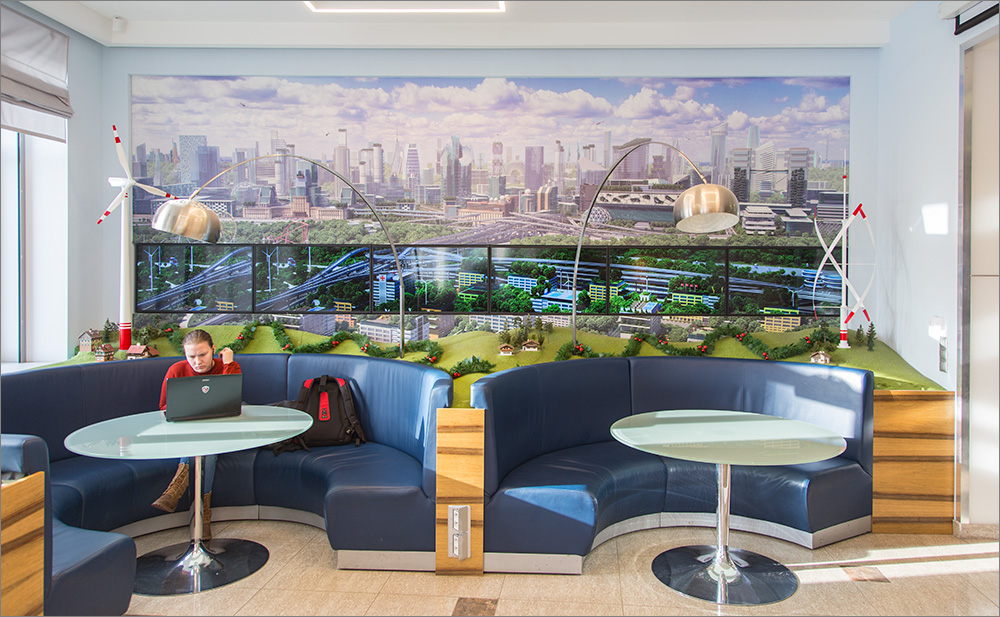

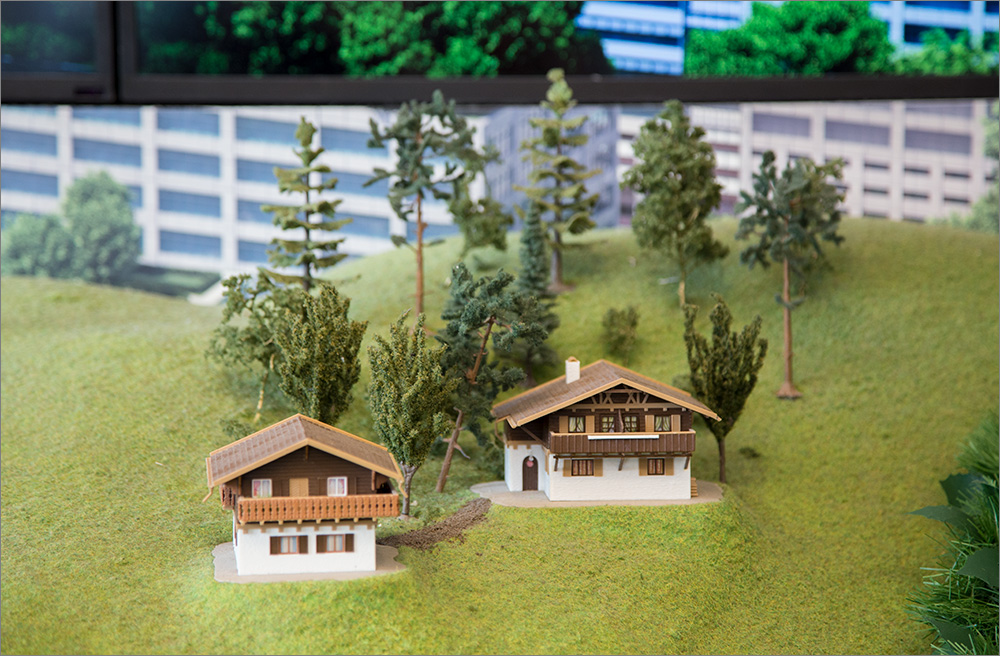
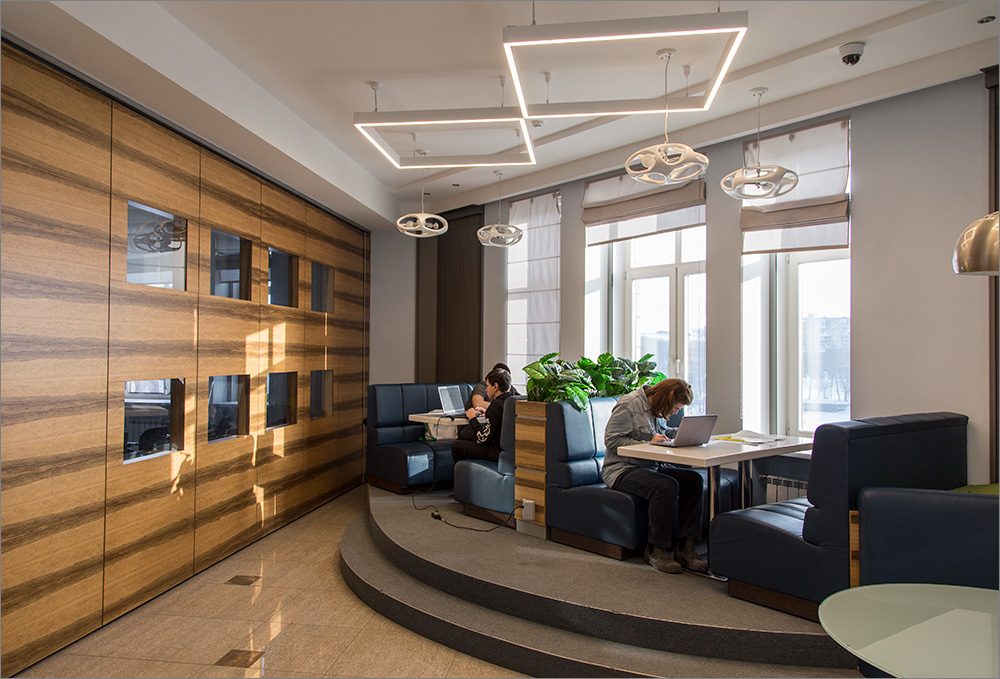
I was pleasantly surprised by the technical equipment of some cabinets - neat desks, a digital whiteboard, a projector, noise protection windows. Eh, in my institute there was nothing like this. As well as there were no Google Docs and laptops that could work for 8 hours from a battery - now with such equipment I would love to learn again, but already “more thoughtfully”.

Throughout the university, transparent doors are being made now, including in workstations and classrooms - thus, the leadership symbolizes its openness.
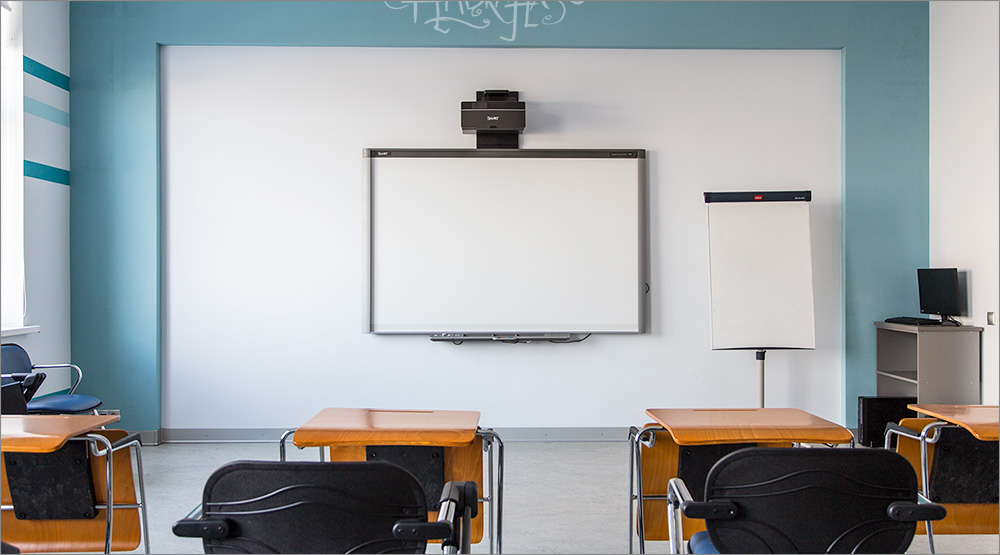


And here, for example, an office for important negotiations. More like a cabinet of directors in a large company:
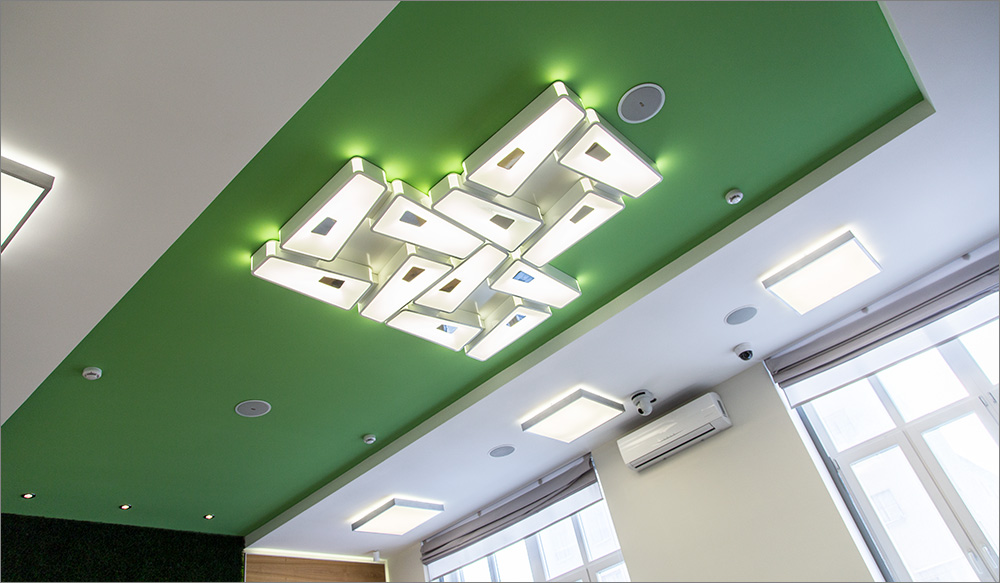

I was about to leave, when suddenly I was told, “Do you want something else interesting to show?” - can you somehow refuse if you ask a question like this? )

The road to the main building. On the right (not visible) is the monument of AD. Bauman, which students call "Foot." Behind it is a fountain and a square - the very “net”.
A couple of minutes later we were driving towards the laboratory building (mostly junior courses are taught in it), in front of which stands a monument to one of the “graduates” - Sergey Pavlovich Korolev.

Students call this hull “Cruiser”, “Titanic” or “Icebreaker” - for their similarity with the hull of the ship and its location (on the bank of the Yauza River). But the equipment is really like on the “Titanic”: the total area is more than 80 thousand meters, the readiness for simultaneous admission of more than 5 thousand students. There are 100 classrooms, 20 computer classes, 19 elevators, a library (for 800 thousand volumes of books), a reading room for 680 people, a concert hall for almost 1,194 people, a conference room for 126 people and a number of other rooms. By the way, Yauza is not at all superfluous here, according to popular belief, students throw tubes after drinking champagne from them for a protected diploma (rumors require confirmation by graduates in the comments! And tell us about the basins, eh?)
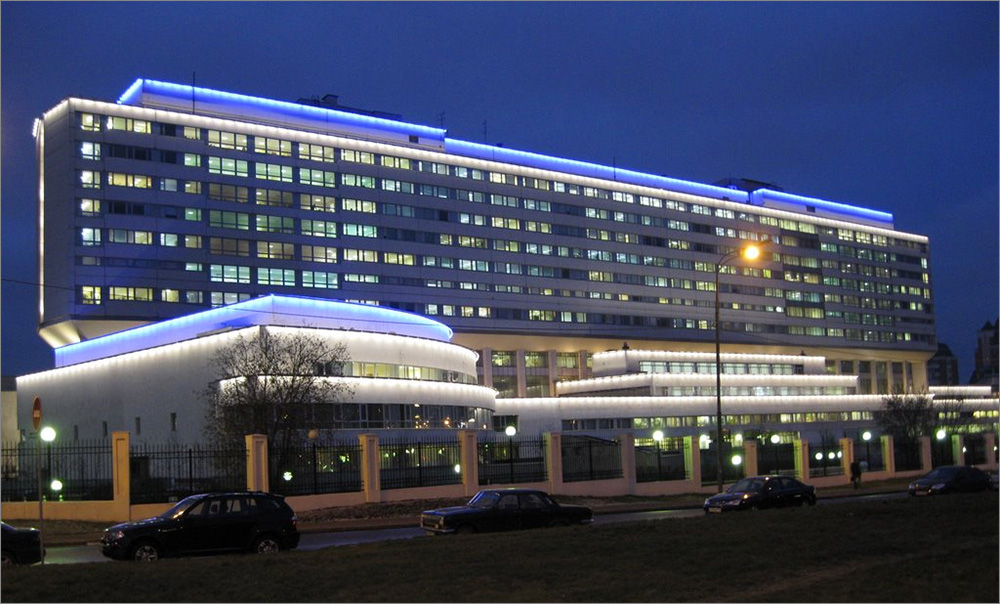
Night "Titanic". Photo from here .
But they didn’t show me all these audiences and halls, but took me to a relatively small room somewhere in the basement of the building. What I saw, I expected to see the least.
What do you think it was?
Do you think the remains of Triceratops, found under the building of the corps? Nope
Although it would be interesting, of course.
And I saw cars. But not ordinary, but unusual - which make about 15 students, as I understood, almost in the hobby mode. And the university helps them in this. In the first room there were about 5 cars - two prototypes, several fireballs, a rally Kalina and a completely independent coupe-cabriolet with the patriotic name “Crimea”, which proves that the right hands and heads can work wonders ... even from Lada Kalina (dashboard, engine, chassis and power parts are taken from it).
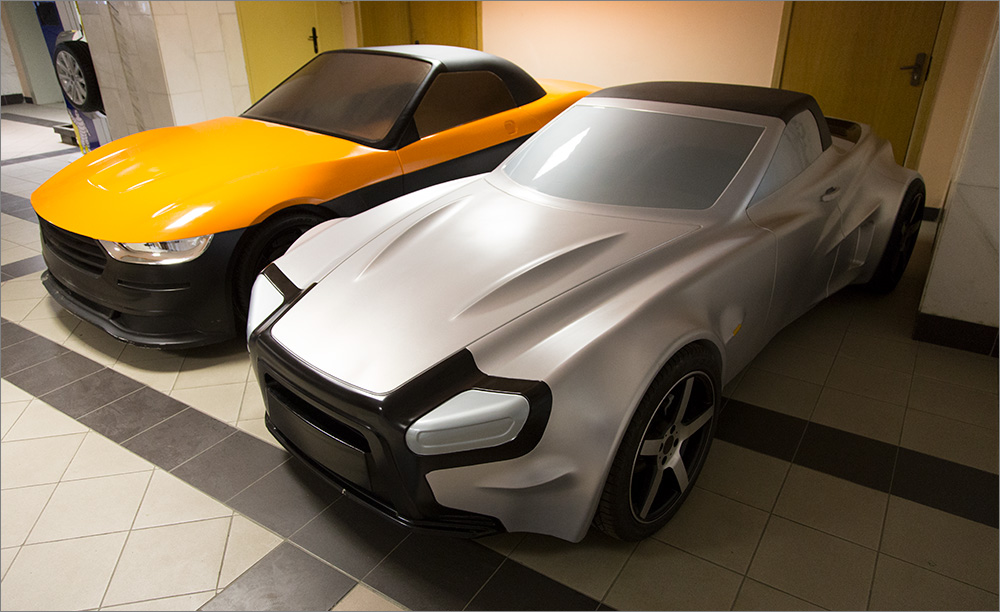
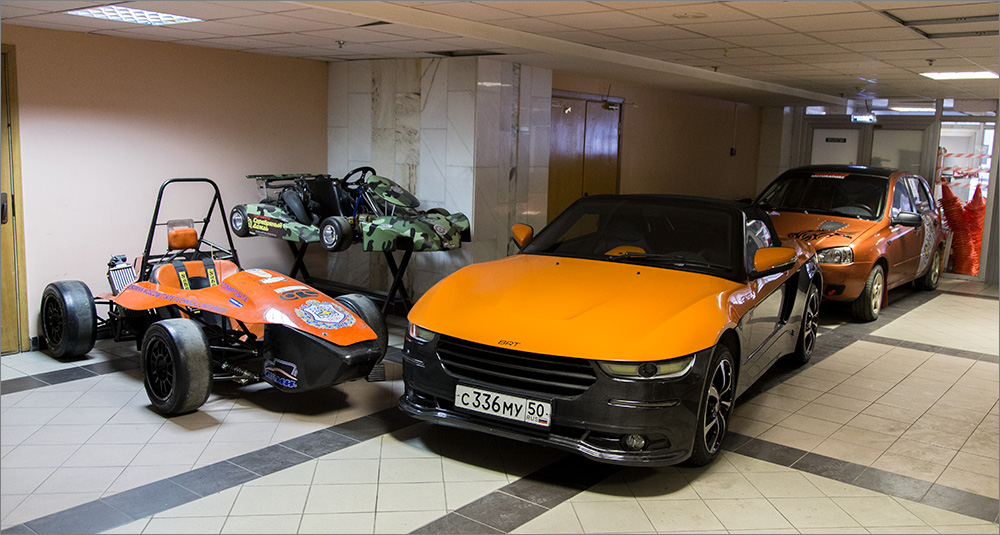
In the background - rally "Kalina"
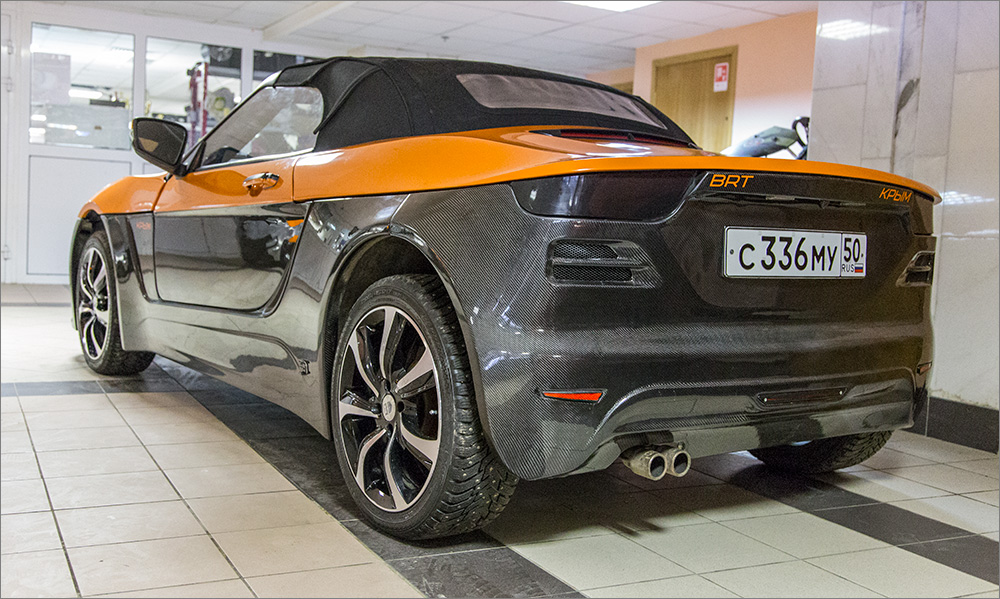
About the last car, you can read the logbook on the drive, but if in brief - it is almost from scratch assembled car, in which even the body is made independently of carbon fiber. The car is not just on the go, but even stands on the account and even managed to go to the Crimea and back under its own power. The car was on vacation, and you're not;)
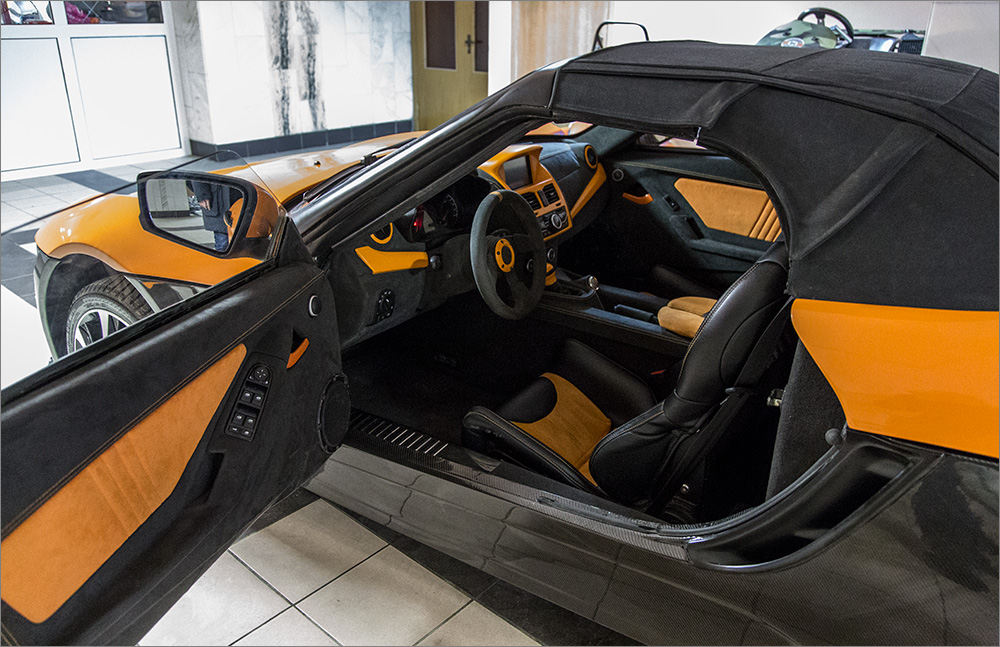
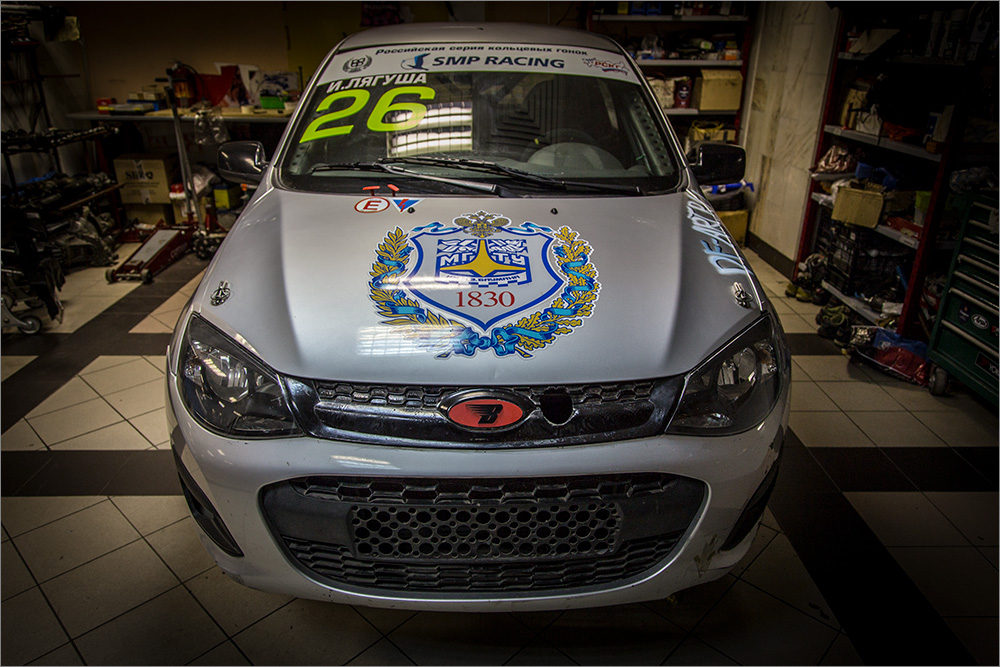
" Kalina" for circuit racing
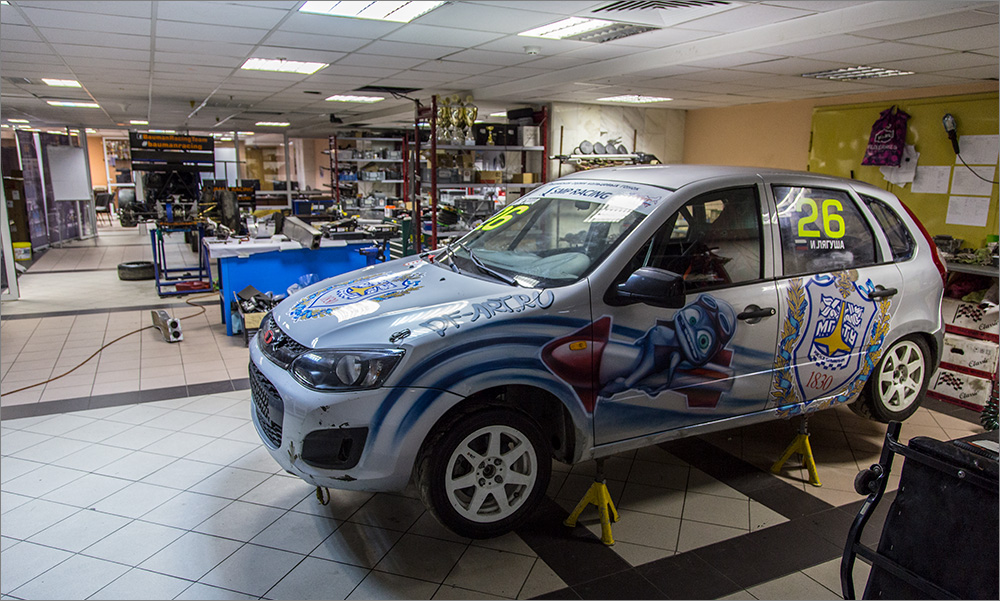
In the second room is a workshop, soaked in the spirit of those hangars in which the best engineering minds finished Formula 1 race cars in the 50s and 70s of the 20th century. The sweet smell of oil, the radio — everything is like in ordinary garages, only instead of the average troughs there are racing race cars, as befits such a hangar. Not Formula 1, of course, but do you know a lot of universities, where, in principle, you can meet something like that? I know perhaps that MADI (Auto-Road Institute), but it would be strange if paper planes were made there instead of something automobile.

In the workshop, enthusiastic students make race cars for the BRT racing team (Bauman Racing Team, has been the champion of Russia for two years in a row, about 25 people in the team) and cars for the BMS team (Bauman Motor Sport - rally and circuit races, the team has about 10 people ), And almost all (except for engines and telemetry) are trying to collect on their own. There they also have a small room, where various components are made of carbon fiber with the help of dies.
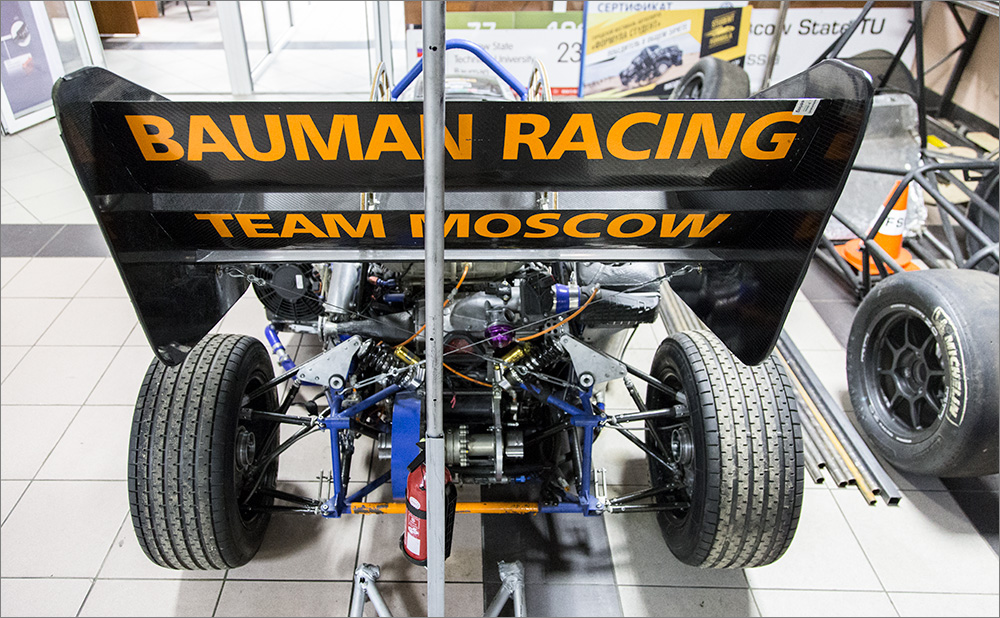
A racing team is not a student's initiative, but a serious participant in international competitions. The fact is that in 1976, several teams of American universities gathered, which just for fun staged a race on light cars converted from lawn mowers. This is how the Formula Student engineering competition appeared in which universities from around the world took part. Not an exception, and MSTU. N.E. Bauman, whose debut car in Italy in 2013 did not take prizes, but turned out to be the most powerful racing car among the newcomers. Due to the special design of the power plant and the supercharging system on the dyno, an experimental result of 102.3 hp was achieved. - This is quite a lot for a car of this class. A number of other unique design solutions were applied.
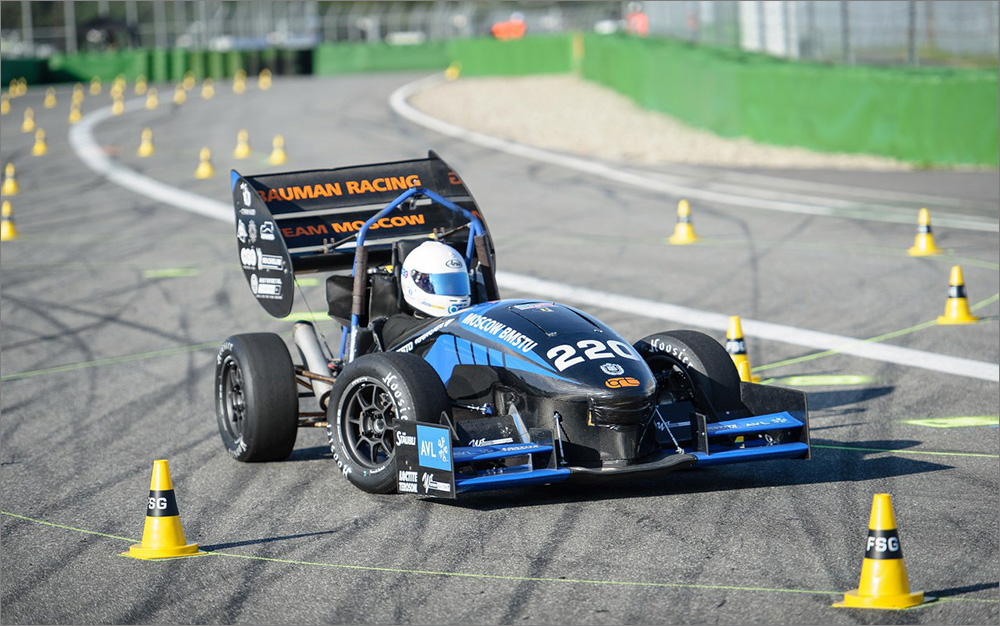
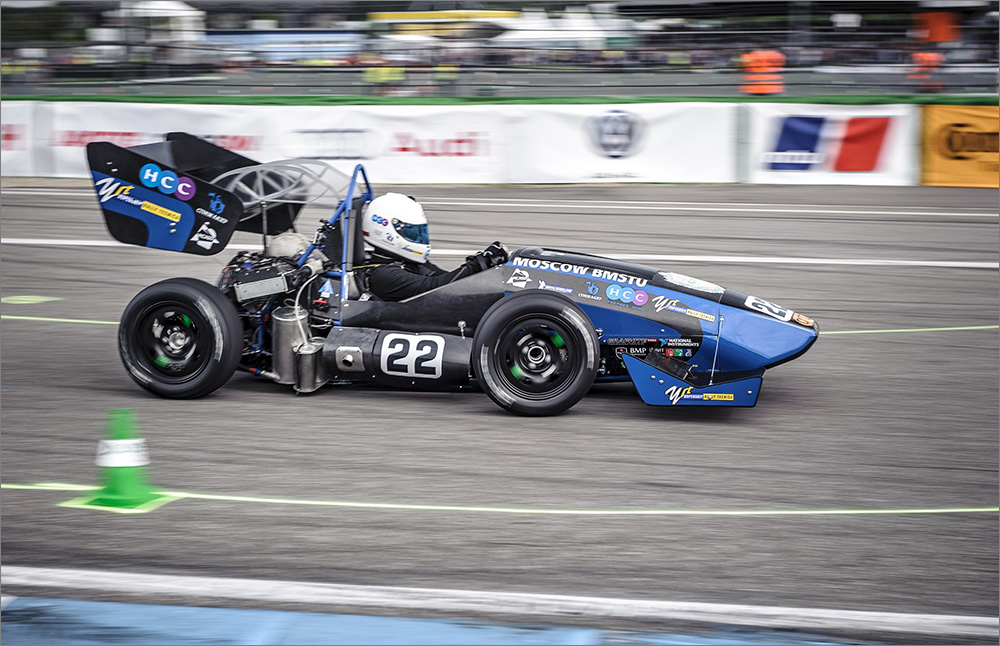
According to the rules of the competition (the same engineering cup!) In each new year, students are required to exhibit a car, 70% consisting of new parts or a new one in principle. So the work does not stop for a minute, and the first of the cars serves as an experimental car and a means of training pilots.
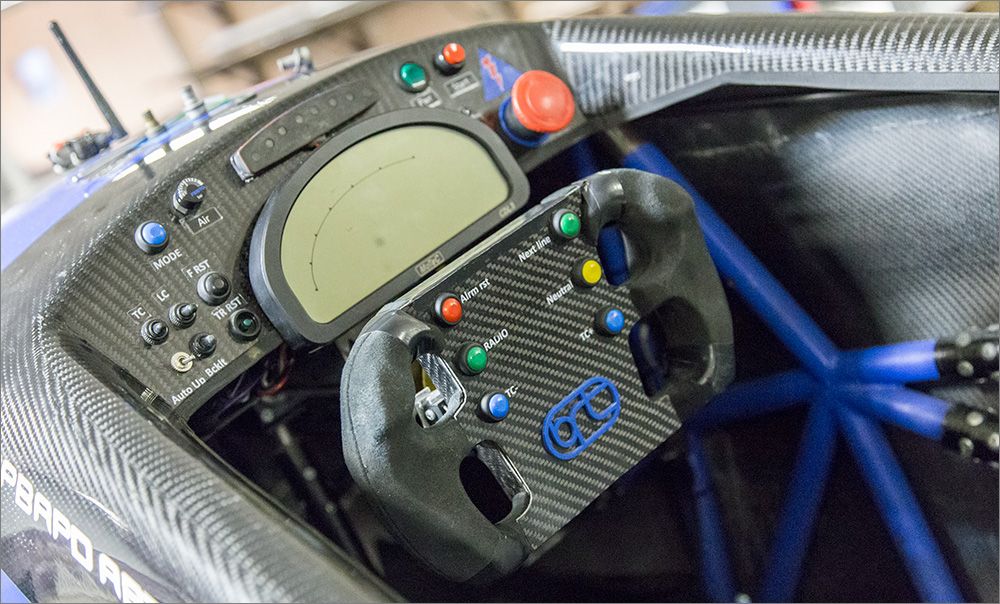

This is the BRT4, that is, the fourth car. Its characteristics are as follows:
Perhaps the post looks a bit "scattered", but you understand - it is difficult to write something intelligible, walking only on several floors and laboratories. So he wrote on the fact that he managed to take pictures.
This post is not an ode to Russian education and not even an attempt to lure applicants into the harsh everyday life of matan, sopromat and termekh. The purpose of the post is to show the readers of Geektimes only a small part of one of the really cool universities in Russia, to study in which is very difficult, but interesting and promising. And I, as a representative of Geektimes, are very pleased that such a large university decided to start a blog on our project so that, like the schools already present, to share useful information with you. I wish you every success in this difficult matter!
Well, now carry testimonials, as promised.

Under the cut a lot of pictures. Anyone who reads and finds all the Easter eggs - automatic test.
In general, I am more used to writing about the offices of IT companies than about universities, but as they say, why not. Moreover, it is the University. N.E. Bauman, like no other, is similar to the offices of IT companies and even surpasses them precisely in the spirit and concentration of the best students of technical specialties in Russia. Just imagine: you walk along the corridor, and there is a group of students nearby - and among them are future employees of the largest IT companies, search engines, engineers and inventors. That is, those who will certainly determine what it will become, our nearest technological future.
')
Meanwhile, Baumanka has a great and glorious past. I'll start with a little historical excursion. Everything happened back in 1826, when Empress Maria Feodorovna (wife of Paul I) ordered the establishment of large workshops of various crafts for orphan boys from the Educational House. Under this case, the famous architect DI Gilardi was rebuilt by the Slobodskoy Palace, which had already burned down in 1812. And on July 13, 1830, Emperor Nicholas I approved the “Provision on a Handicraft Educational Institution” - from this date the chronology of the current MSTU began.

In this form, the palace appeared before the first disciples. Photo from here .
In 1868, the Charter was issued, the first paragraph of which read: "The Imperial Moscow Technical School is a higher specialized educational institution, which has the main purpose to form construction engineers, mechanical engineers and process engineers." The first departments in the steel school were the departments of higher mathematics, general and applied physics, construction of machines, construction art, technology of fibrous substances, general chemistry, chemical technology. From there, and led the tradition to produce the coolest engineers of the country, inventors and professionals with a capital letter.
Since then, the school has been repeatedly renamed, and all sorts of "branches" later became quite self-independent universities. For example, this is how the “Baumanki family tree” looks like, which is located in the main academic building:

[ Clickable ] It was not easy, but I found the source of this picture - look, interesting.


I was surprised to learn that my institute (MEI TU) is just one of many “processes”.
From 1918 to 1930 and from 1943 to 1989 the institution was called MSTU (Moscow Higher Technical School, the older generation still calls it MGTU), although the alternative interpretation of this abbreviation sounds like "Courage, Will, Work and Perseverance" - now this phrase is the motto University).
In Moscow there are several MSTU buildings - these are educational and laboratory-laboratory buildings, although some branch faculties are located in different cities near Moscow at various enterprises (Almaz-Antey, RKK Energia, etc.). The university also has three branches - Kaluga (on 7 buildings, 5 faculties), Dmitrovsky (not far from the Radio Telescope named after NE Bauman) and Mytishchi (on 2 faculties; the former Lestech).
More than 70 specialties are taught at the University, the teaching staff is more than 4,500 professors and teachers (450 of whom are doctors of science, about 3,000 are candidates). About 20,000 students study at the university every year!
My acquaintance with the "Baumanka" began with the main academic building (aka GUK), which consists of two parts:
- the oldest (also called the palace) - is a Slobodskoy palace of the XVIII — XIX centuries, this part is facing to the 2nd Baumanskaya street;
- the second later (the so-called "circular" or "high-rise") part of the GUK consists of 12 floors and was built in Soviet times, facing the Yauza embankment - it is from this angle that the Bauman is most recognizable.

Construction began from the left wing, which is called the “north”, later the construction of the right wing was completed, as it is not difficult to guess, the “south” (audiences located in this wing are numbered with the suffix “u”). The MGTU museum is located in the same building, and on the upper floor there is a shooting range of 25 (for pistol shooting) and 50 meters (for rifles). Everyone who drove along the embankment and saw the building of the University, always noticed 6 statues above the main entrance - representatives of the specialty. Their Bauman traditions also did not pass by and gave a very specific name “six non-drinkers”.

Well, or “The Seven Non-Drinkers” - implying, under the seventh non-drinker, is the Korolev monument, then the rector of the university, whose windows overlook here :) Photos from here .
Although the general rule of numbering of audiences is valid in the GUK, it is one of the most complicated among the university buildings. The audience number GUK consists of the number of the floor (the first figure) and the sequence number of the audience. Serial numbers are assigned to the audience in a staggered manner. Even numbers are located to the right when moving along the circulating part in the direction from the central staircase of a high-rise building GUK.

In the main educational building of MSTU there is a technology park of the Mail.Ru Group, the founder of which, Dmitry Grishin, is also a Bauman graduate.

The technopark of qualified web developers and system architects is trained by practicing teachers from Mail.ru. During training, students master 23 disciplines with a practical bias. Training takes place after class, students solve complex practical problems in groups, acquire design and collaboration skills, and gain experience. And yes, it's all free.


There is also a small library with modern technical and near-technical literature and a small rack with antique pieces of iron.


Now I am doing repairs at home, so I smelled fresh plaster by smell — some floors (and the main staircase) of the building just after repair, and, by the standards of educational institutions, everything looks very expensive. Here, for example, "Hall of Fame", in which portraits of the founders of scientific schools hang:


There are many well-known scientists to memorize everyone at once. NOT. Zhukovsky, N.I. Mertsalov, S.A. Chaplygin, S.I. Vavilov. P.A. Velikhov and many others.
And here is a separate gallery for outstanding students: S.P. Korolev, A.N. Tupolev, B.S. Stechkin, V.G. Shukhov, P.O. Dry, N.A. Dollezhal and other talented engineers, designers and pioneers of aviation.

Near the hall of fame hang several awards of the university itself, which can boast not only everything: the Order of Lenin, the Order of the Red Banner of Labor and the Order of the October Revolution.

By the way, “Baumanka” is one of the few universities in which higher technical education can be obtained (as early as 1934) by people with hearing impairment - for them there are special laboratories, teachers and specially designed educational programs.

Baumans have a lot of traditions, and around the main building there are many interesting places with an unusual name. It has its own “metro” and “saccodrome” and even its own “Red Square” - one of the places in the main building (with red walls), where students often arrange a meeting.

Next to the “red square” there is a “fatty row”, which consists of 4 canteens, dumplings, pancakes, a cafeteria and a couple of buffets. Um, did you just want dumplings too? )

There are places in the main building that even an undergraduate can find not the first time: audience 501 and 502, 316, 323 and 327 (a separate pointer hangs for it).

Nightmare perfectionist)
And here is what one of the places where students



All laboratories are equipped with the necessary modern equipment and measuring equipment - this gives you the opportunity to get practical skills from the first year of study and learn how to interact with equipment and instruments, and not adjust the results (admit, did you do this at school or high school?)).







Most of the lecture halls at the University are lectures; they hold a whole stream of them — about six groups of 25 people each. The main difference between such lecturers are boards. They are three-storeyed and move using a special mechanism.

In the main building there are the two oldest audiences with a unique ceiling, where the famous Shukhov, Korolev and Tupolev still studied. It is these audiences who usually fall under the sights of all filming taking place in MSTU (“My Boyfriend is an Angel”, “Since March 8, Men”, “House of the Sun”, “Avatar” and others).
In one of the research and educational centers (there are only about fifteen of them at MSTU) a rather interesting exposition met - an option of how the area in which the university is located could look in the future. If someone has not seen, then the university itself is located there, on the left side. By the way, and still windmills rotate.




I was pleasantly surprised by the technical equipment of some cabinets - neat desks, a digital whiteboard, a projector, noise protection windows. Eh, in my institute there was nothing like this. As well as there were no Google Docs and laptops that could work for 8 hours from a battery - now with such equipment I would love to learn again, but already “more thoughtfully”.

Throughout the university, transparent doors are being made now, including in workstations and classrooms - thus, the leadership symbolizes its openness.



And here, for example, an office for important negotiations. More like a cabinet of directors in a large company:


I was about to leave, when suddenly I was told, “Do you want something else interesting to show?” - can you somehow refuse if you ask a question like this? )

The road to the main building. On the right (not visible) is the monument of AD. Bauman, which students call "Foot." Behind it is a fountain and a square - the very “net”.
A couple of minutes later we were driving towards the laboratory building (mostly junior courses are taught in it), in front of which stands a monument to one of the “graduates” - Sergey Pavlovich Korolev.

Students call this hull “Cruiser”, “Titanic” or “Icebreaker” - for their similarity with the hull of the ship and its location (on the bank of the Yauza River). But the equipment is really like on the “Titanic”: the total area is more than 80 thousand meters, the readiness for simultaneous admission of more than 5 thousand students. There are 100 classrooms, 20 computer classes, 19 elevators, a library (for 800 thousand volumes of books), a reading room for 680 people, a concert hall for almost 1,194 people, a conference room for 126 people and a number of other rooms. By the way, Yauza is not at all superfluous here, according to popular belief, students throw tubes after drinking champagne from them for a protected diploma (rumors require confirmation by graduates in the comments! And tell us about the basins, eh?)

Night "Titanic". Photo from here .
But they didn’t show me all these audiences and halls, but took me to a relatively small room somewhere in the basement of the building. What I saw, I expected to see the least.
What do you think it was?
Do you think the remains of Triceratops, found under the building of the corps? Nope
Although it would be interesting, of course.
And I saw cars. But not ordinary, but unusual - which make about 15 students, as I understood, almost in the hobby mode. And the university helps them in this. In the first room there were about 5 cars - two prototypes, several fireballs, a rally Kalina and a completely independent coupe-cabriolet with the patriotic name “Crimea”, which proves that the right hands and heads can work wonders ... even from Lada Kalina (dashboard, engine, chassis and power parts are taken from it).


In the background - rally "Kalina"

About the last car, you can read the logbook on the drive, but if in brief - it is almost from scratch assembled car, in which even the body is made independently of carbon fiber. The car is not just on the go, but even stands on the account and even managed to go to the Crimea and back under its own power. The car was on vacation, and you're not;)


" Kalina" for circuit racing

In the second room is a workshop, soaked in the spirit of those hangars in which the best engineering minds finished Formula 1 race cars in the 50s and 70s of the 20th century. The sweet smell of oil, the radio — everything is like in ordinary garages, only instead of the average troughs there are racing race cars, as befits such a hangar. Not Formula 1, of course, but do you know a lot of universities, where, in principle, you can meet something like that? I know perhaps that MADI (Auto-Road Institute), but it would be strange if paper planes were made there instead of something automobile.

In the workshop, enthusiastic students make race cars for the BRT racing team (Bauman Racing Team, has been the champion of Russia for two years in a row, about 25 people in the team) and cars for the BMS team (Bauman Motor Sport - rally and circuit races, the team has about 10 people ), And almost all (except for engines and telemetry) are trying to collect on their own. There they also have a small room, where various components are made of carbon fiber with the help of dies.

A racing team is not a student's initiative, but a serious participant in international competitions. The fact is that in 1976, several teams of American universities gathered, which just for fun staged a race on light cars converted from lawn mowers. This is how the Formula Student engineering competition appeared in which universities from around the world took part. Not an exception, and MSTU. N.E. Bauman, whose debut car in Italy in 2013 did not take prizes, but turned out to be the most powerful racing car among the newcomers. Due to the special design of the power plant and the supercharging system on the dyno, an experimental result of 102.3 hp was achieved. - This is quite a lot for a car of this class. A number of other unique design solutions were applied.


According to the rules of the competition (the same engineering cup!) In each new year, students are required to exhibit a car, 70% consisting of new parts or a new one in principle. So the work does not stop for a minute, and the first of the cars serves as an experimental car and a means of training pilots.


This is the BRT4, that is, the fourth car. Its characteristics are as follows:
Power: 68 hp
Engine: Yamaha WR450F (450 cm3, 1 cylinder) with a Garett GT06 turbocharger
Frame: hybrid, carbon and steel pipes
Suspension: independent, double-arm
Aerodynamics: front and rear fenders
Body kit: carbon fiber
Weight: 195.5 kg
Acceleration to 100km / h: 3.8 - 4 s
Perhaps the post looks a bit "scattered", but you understand - it is difficult to write something intelligible, walking only on several floors and laboratories. So he wrote on the fact that he managed to take pictures.
This post is not an ode to Russian education and not even an attempt to lure applicants into the harsh everyday life of matan, sopromat and termekh. The purpose of the post is to show the readers of Geektimes only a small part of one of the really cool universities in Russia, to study in which is very difficult, but interesting and promising. And I, as a representative of Geektimes, are very pleased that such a large university decided to start a blog on our project so that, like the schools already present, to share useful information with you. I wish you every success in this difficult matter!
Well, now carry testimonials, as promised.
My other posts about company offices
- Badoo office
- Office of Intel (in Nizhny Novgorod)
- Office of Intel (in Moscow)
- Office Odnoklassniki
- Office of the company Vkontakte
- Office of the company Beeline
- ICQ office
- Data center "Oversan-Mercury"
- Boomburum office
- Office of Intel (in Nizhny Novgorod)
- Office of Intel (in Moscow)
- Office Odnoklassniki
- Office of the company Vkontakte
- Office of the company Beeline
- ICQ office
- Data center "Oversan-Mercury"
- Boomburum office
Source: https://habr.com/ru/post/401781/
All Articles